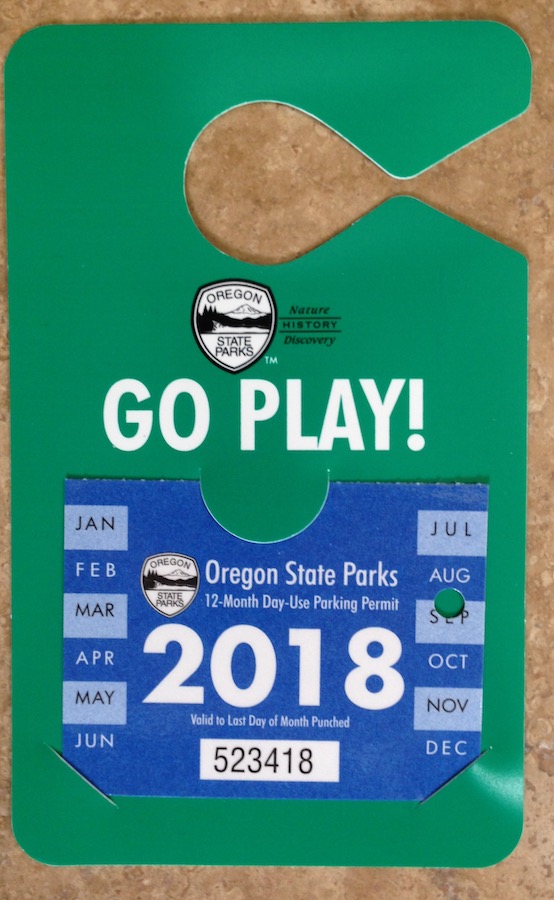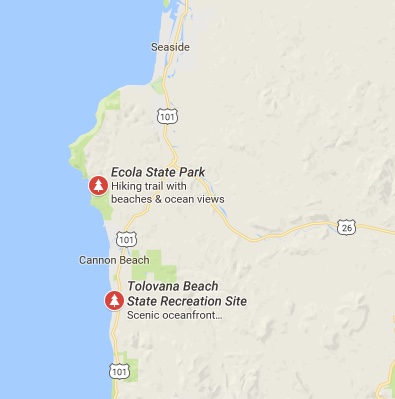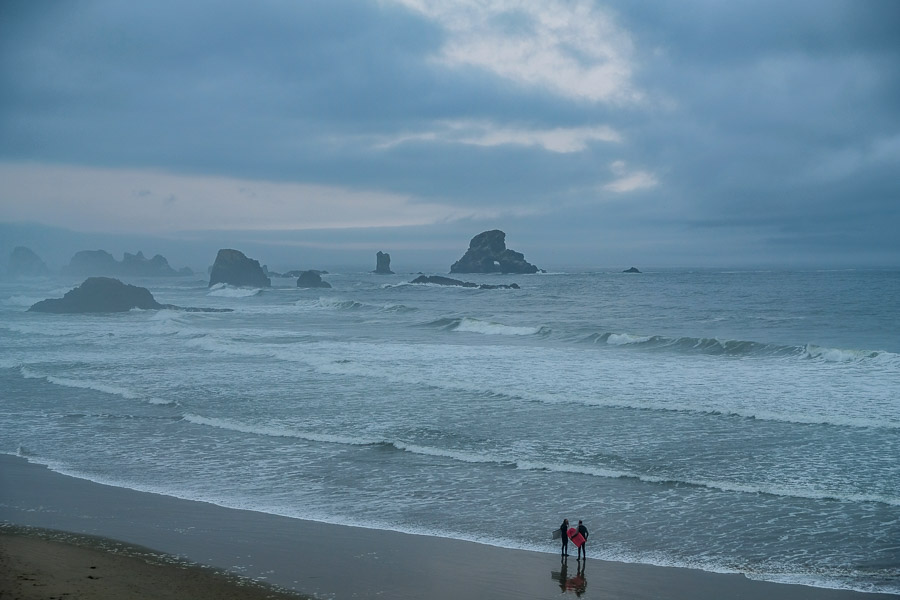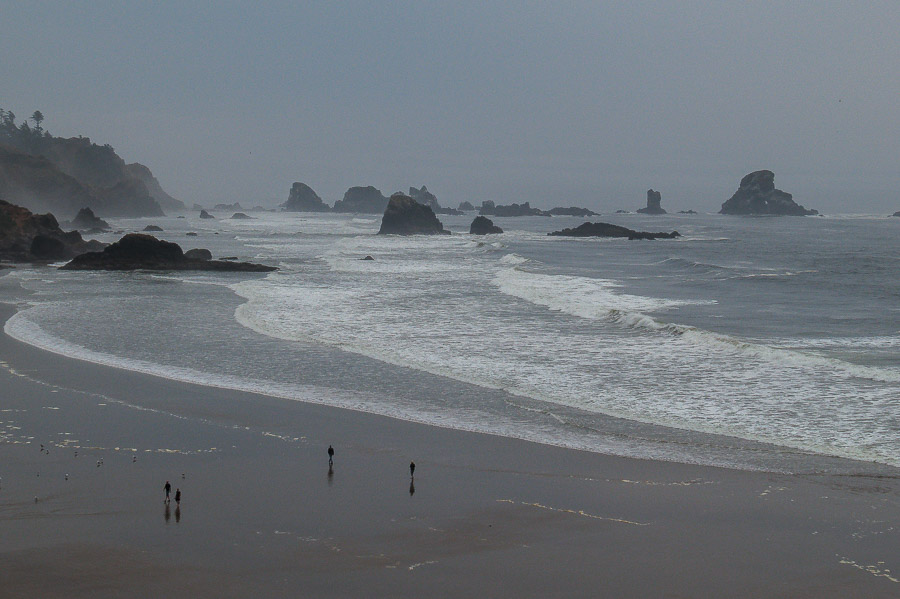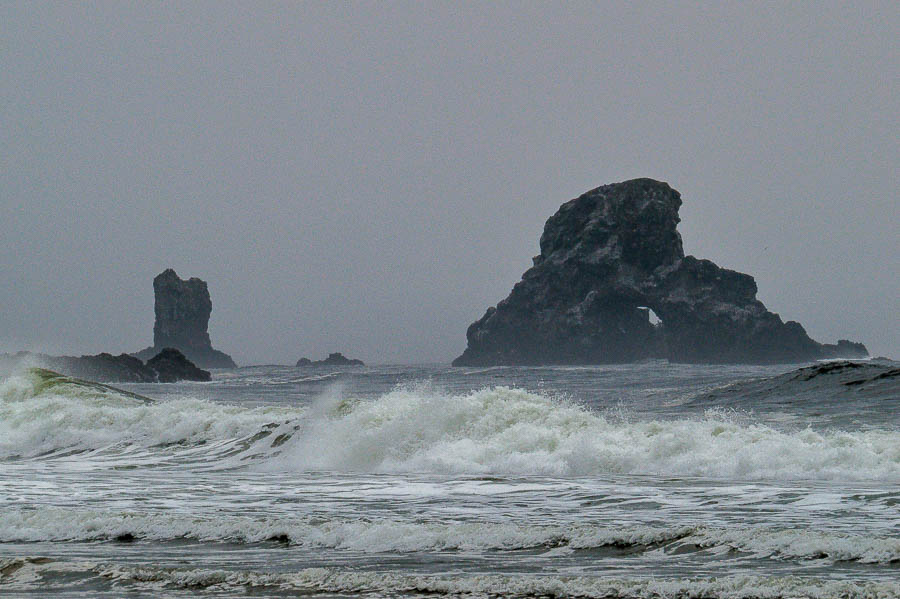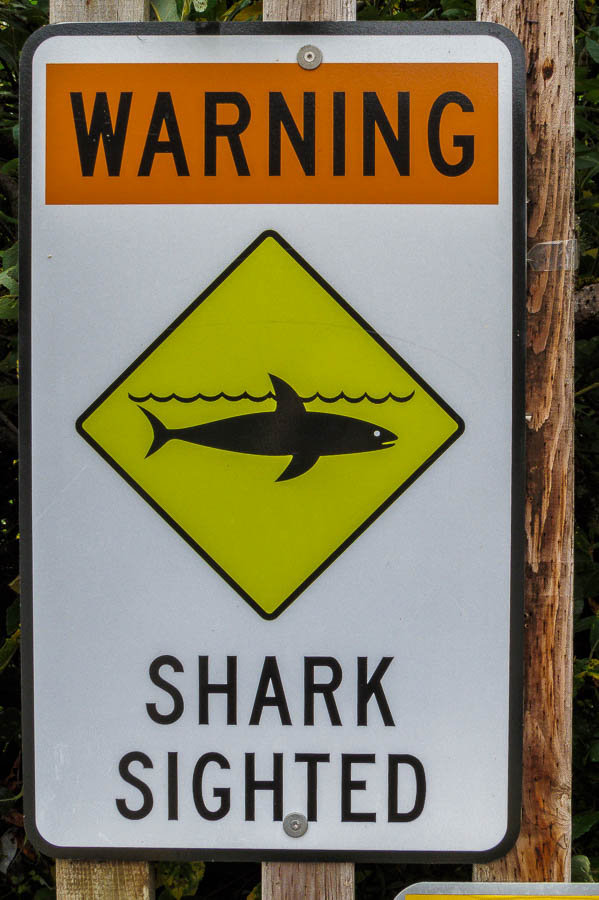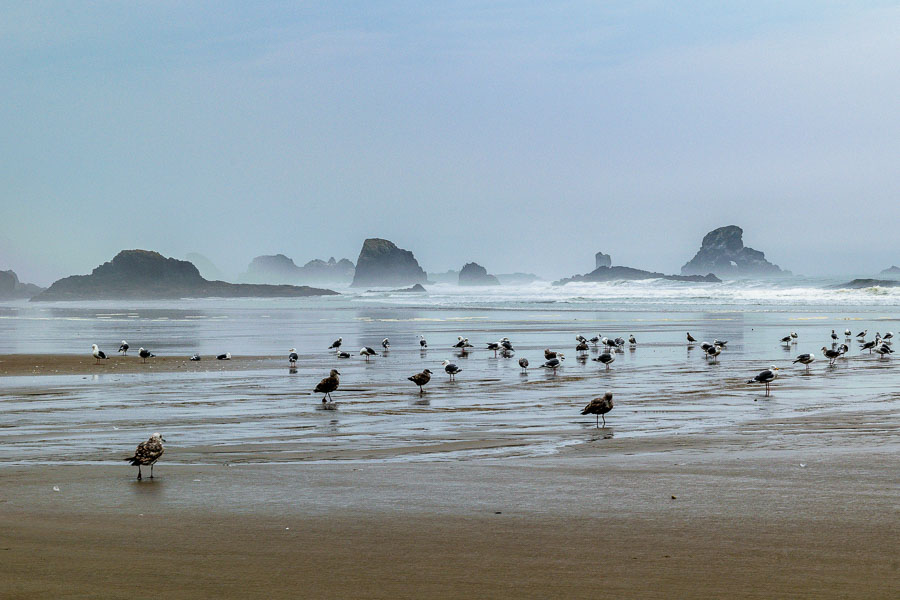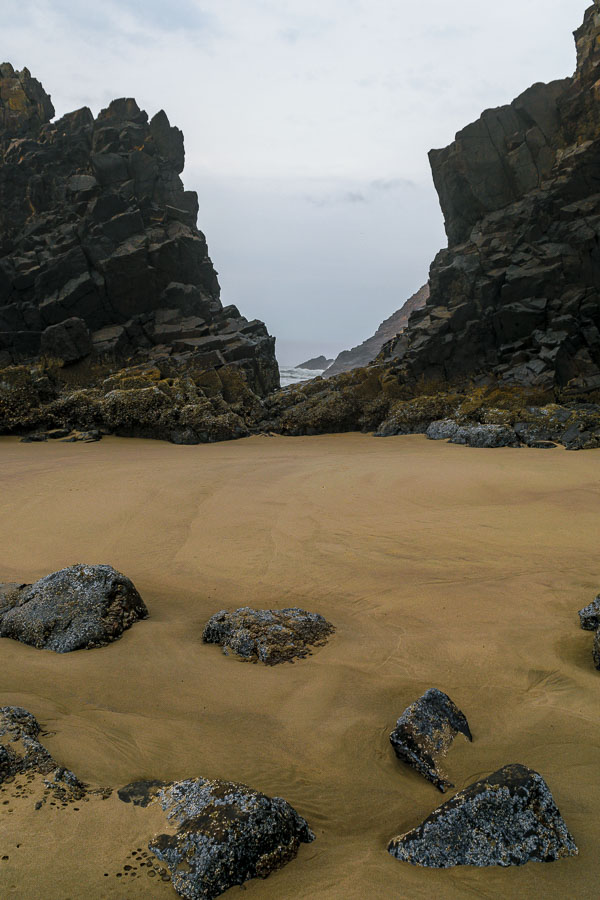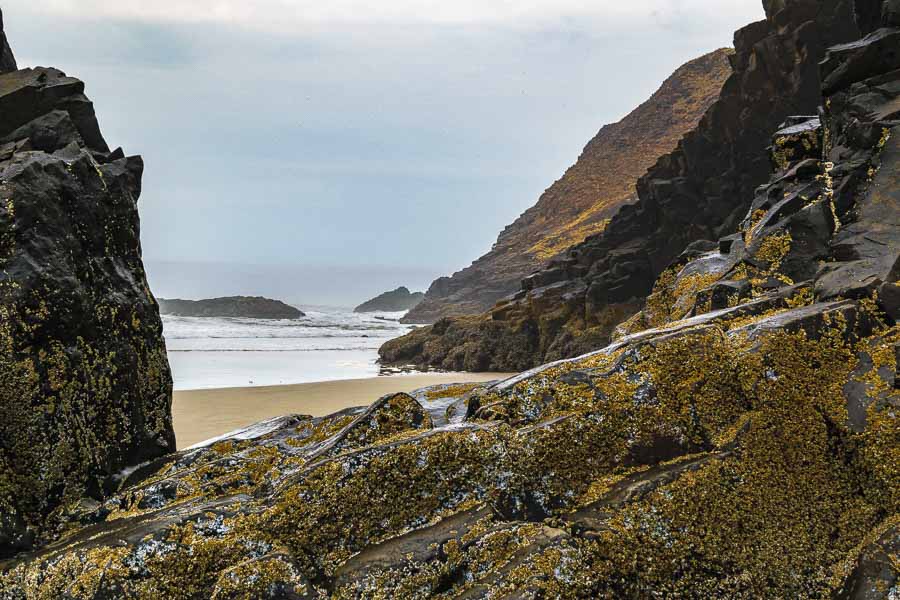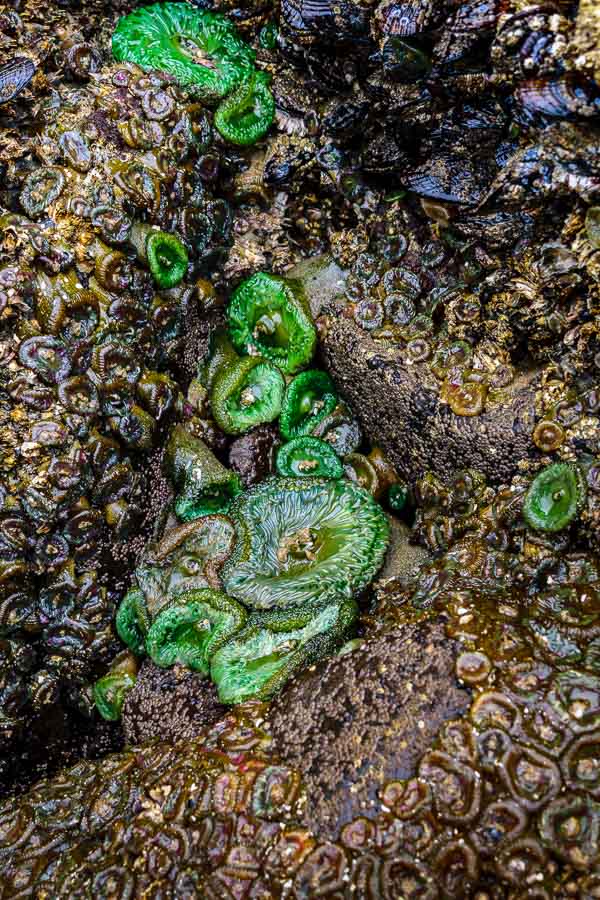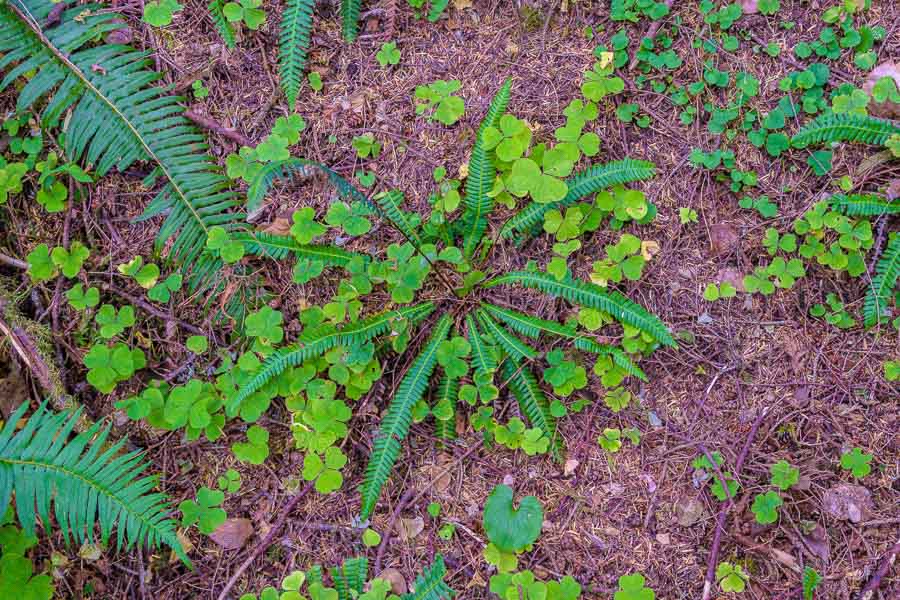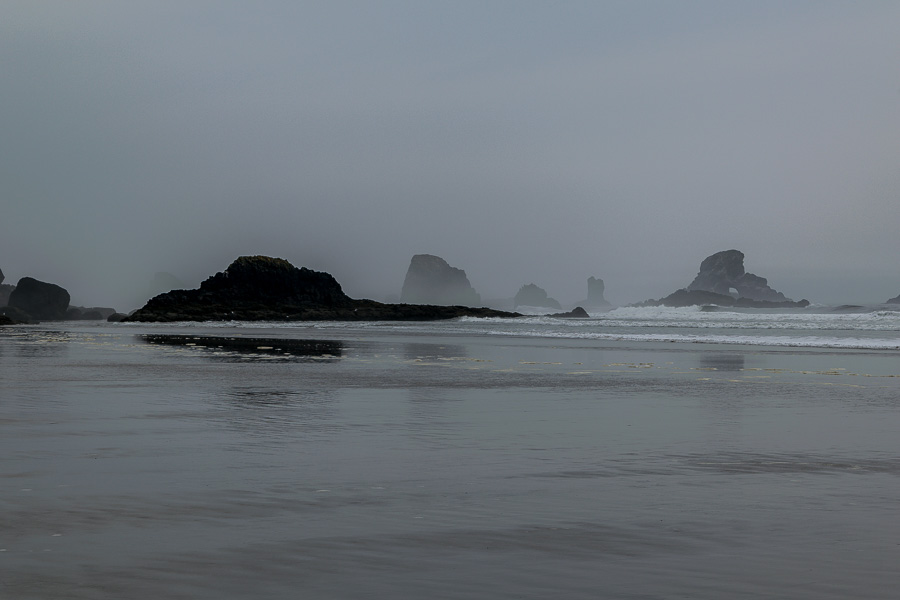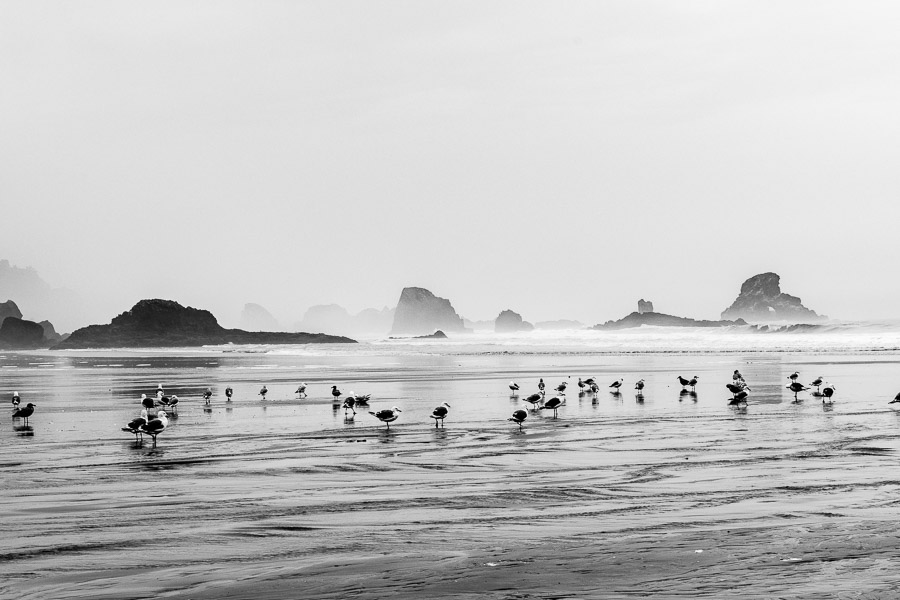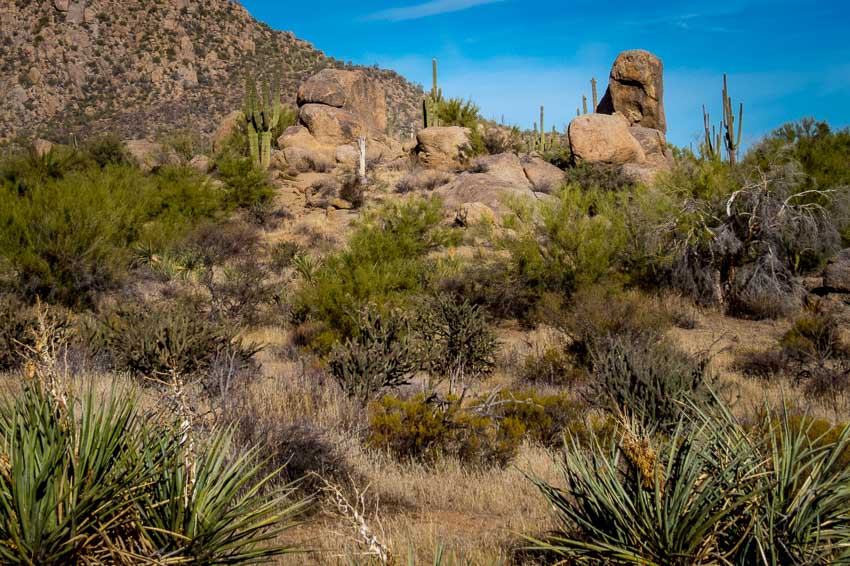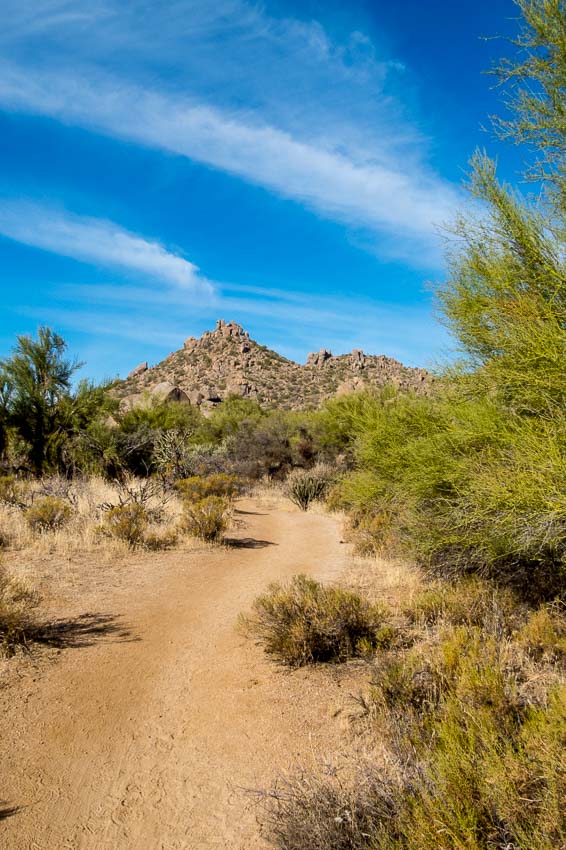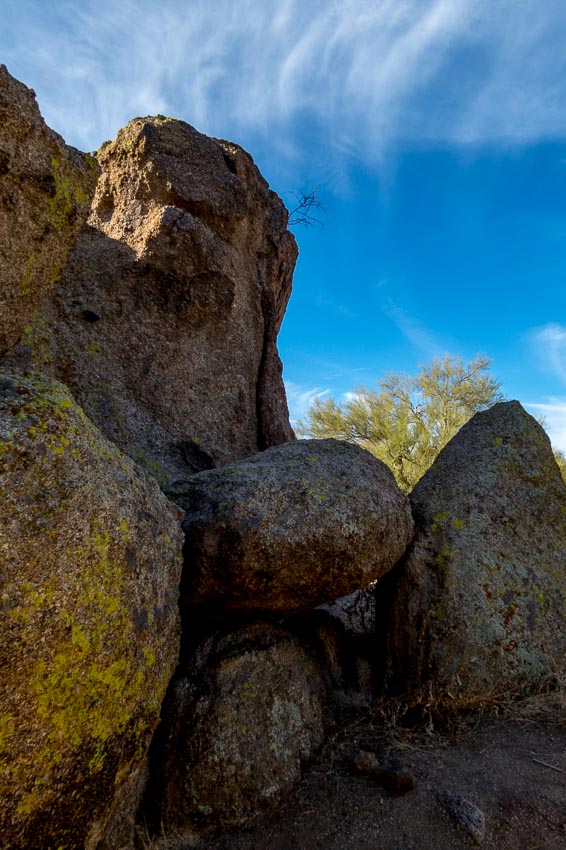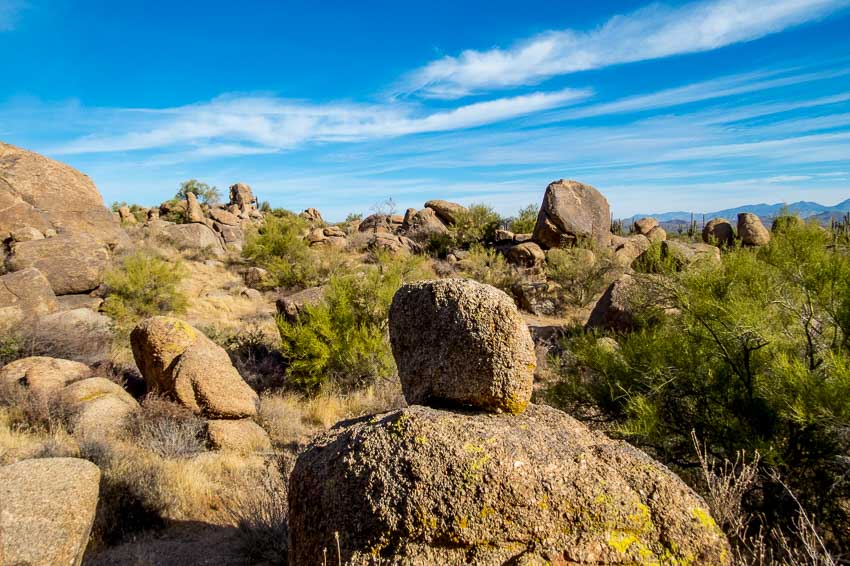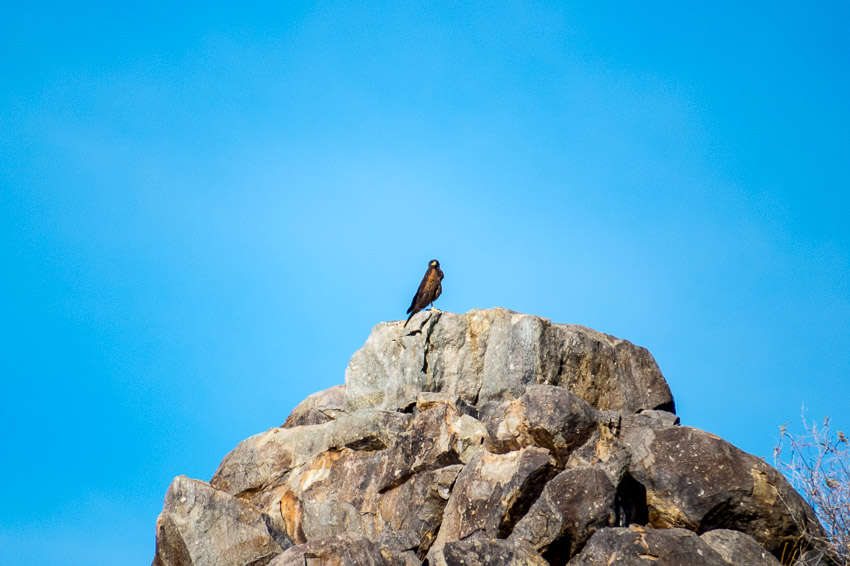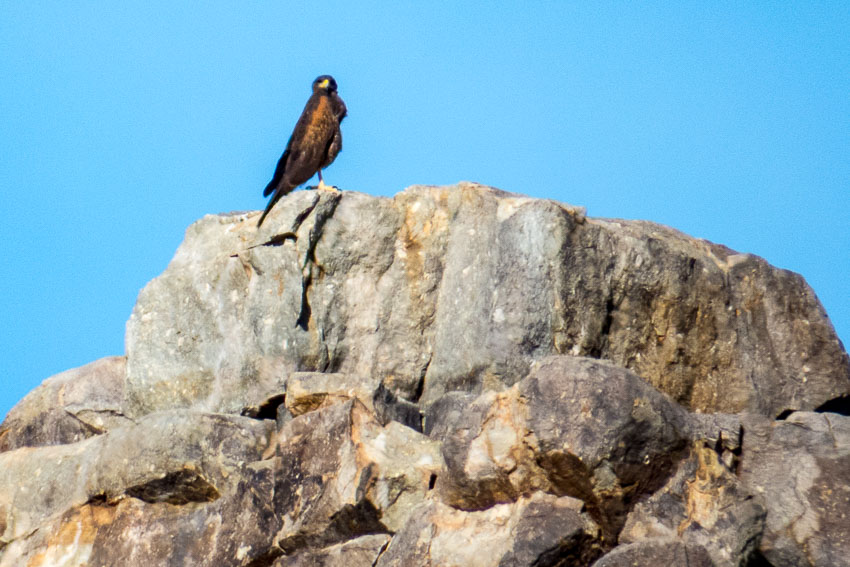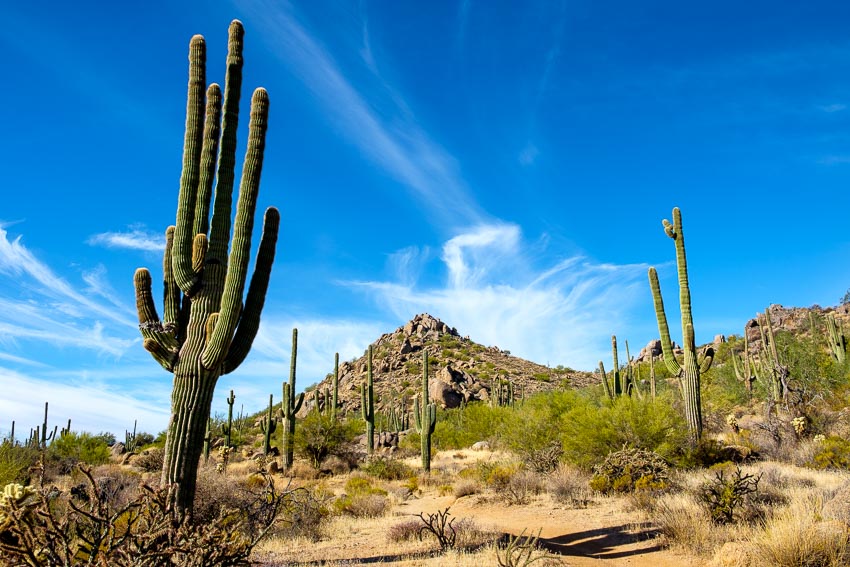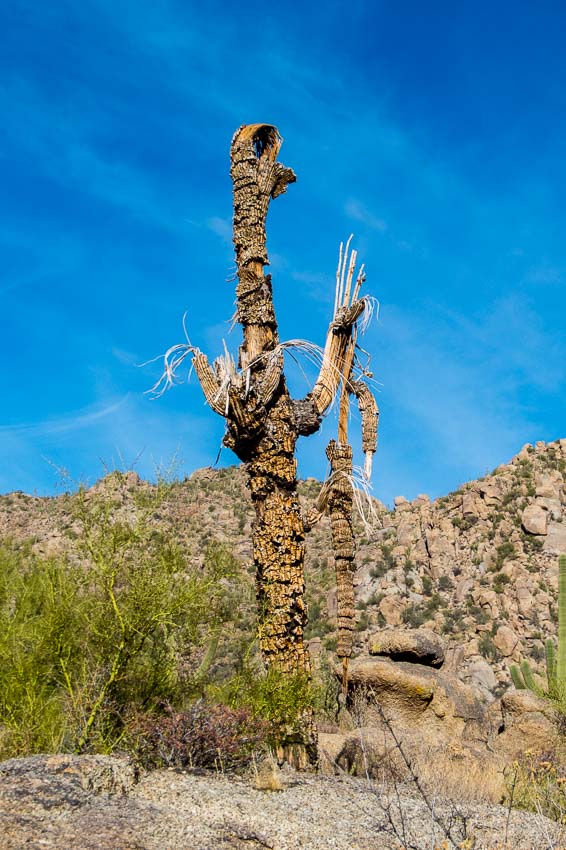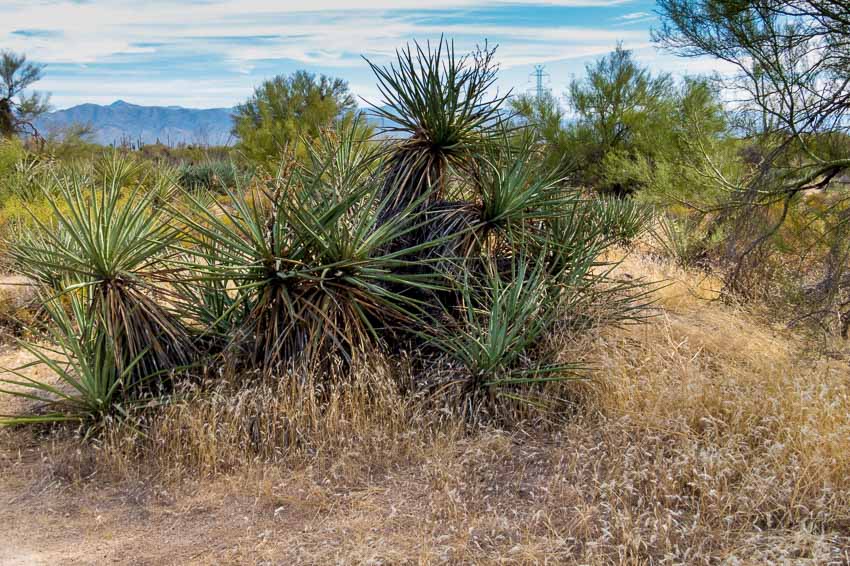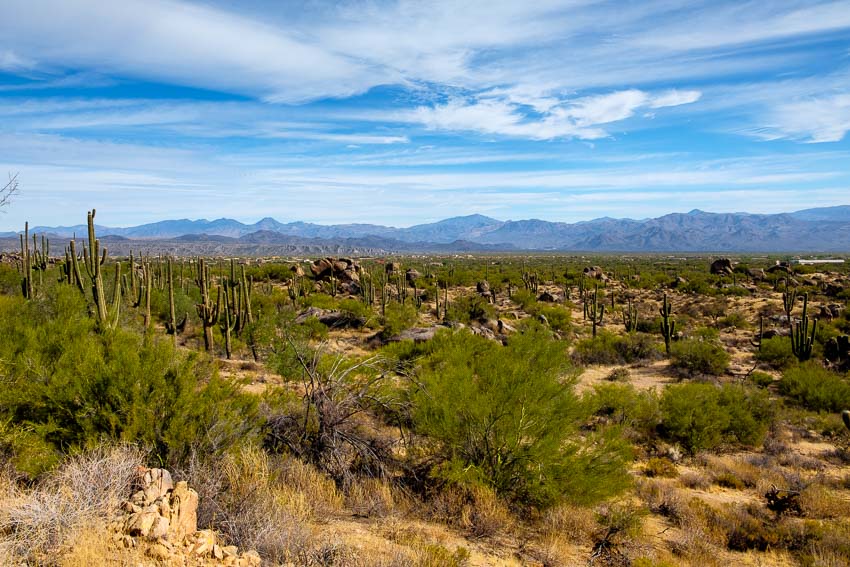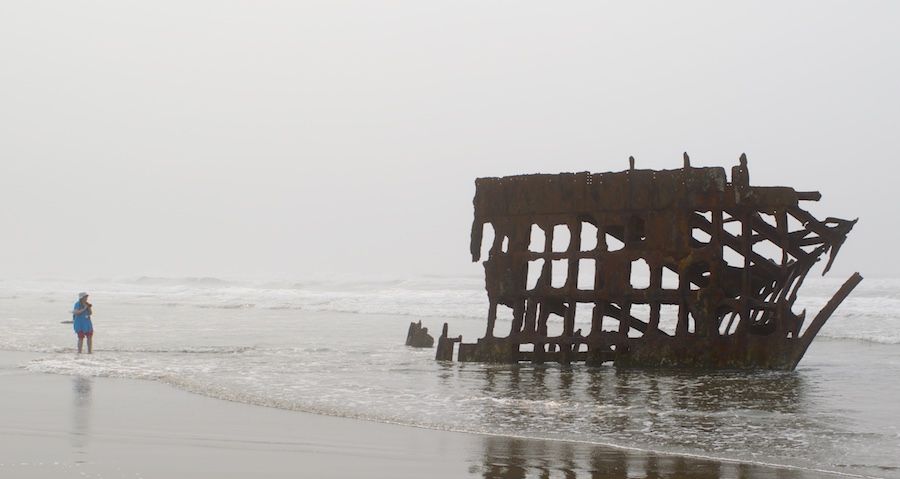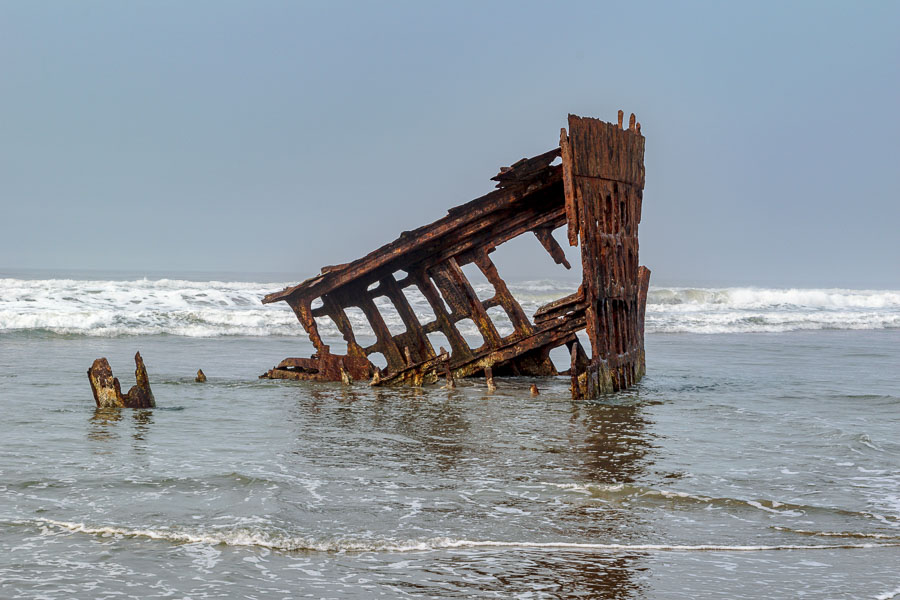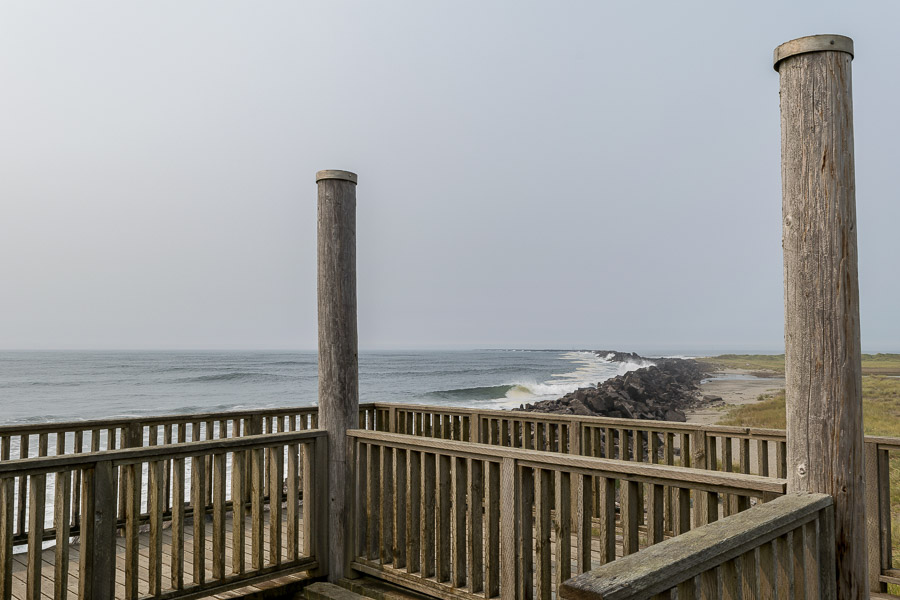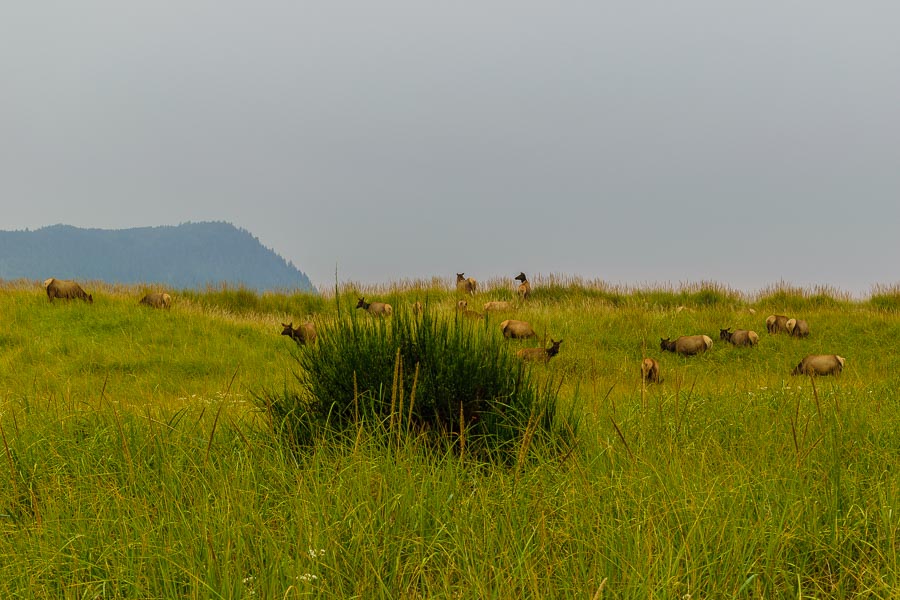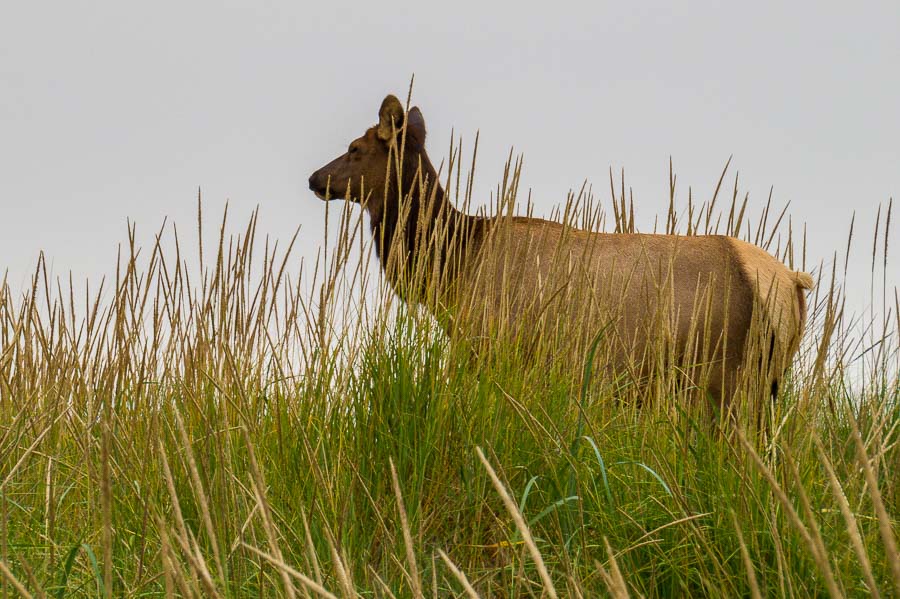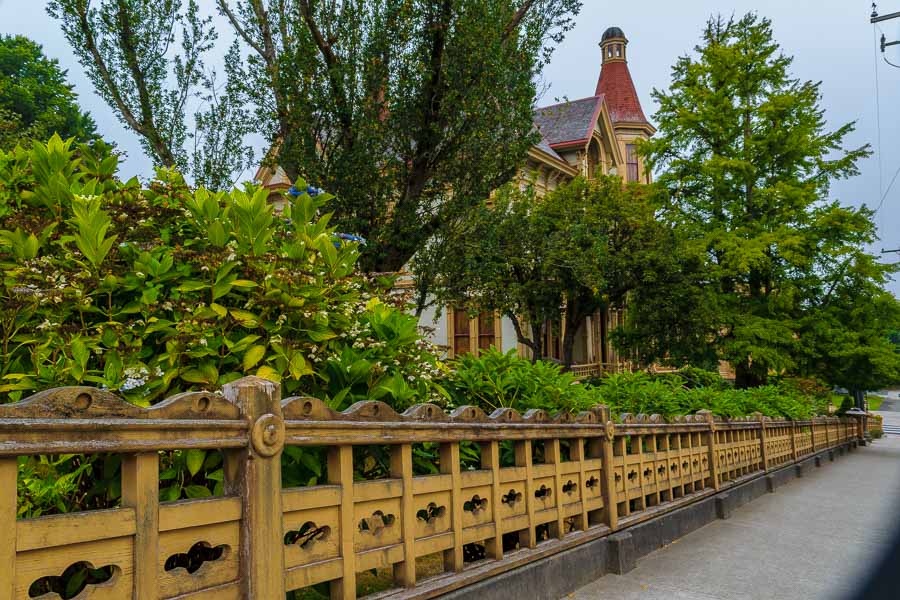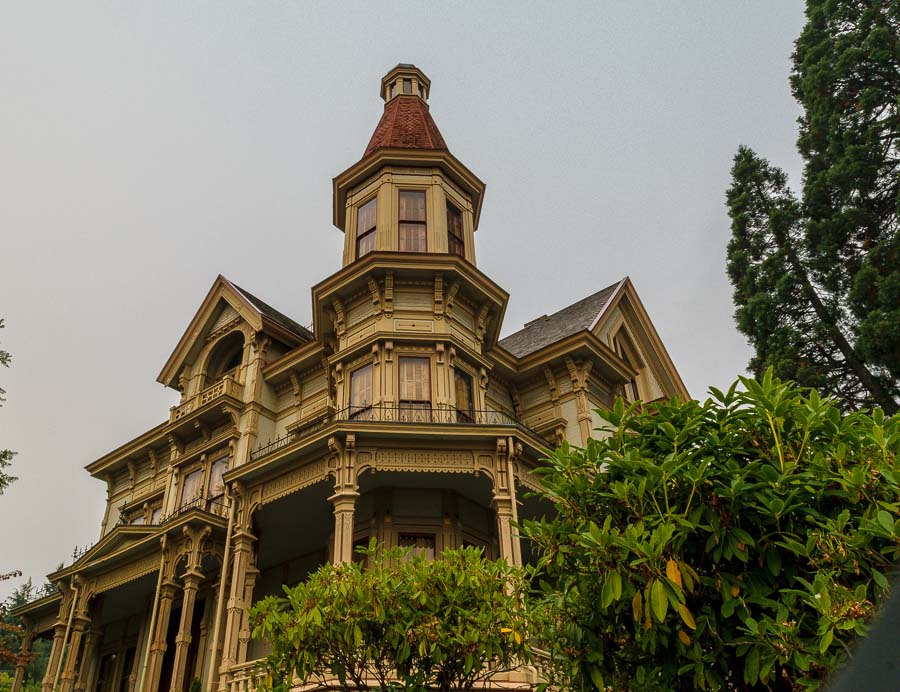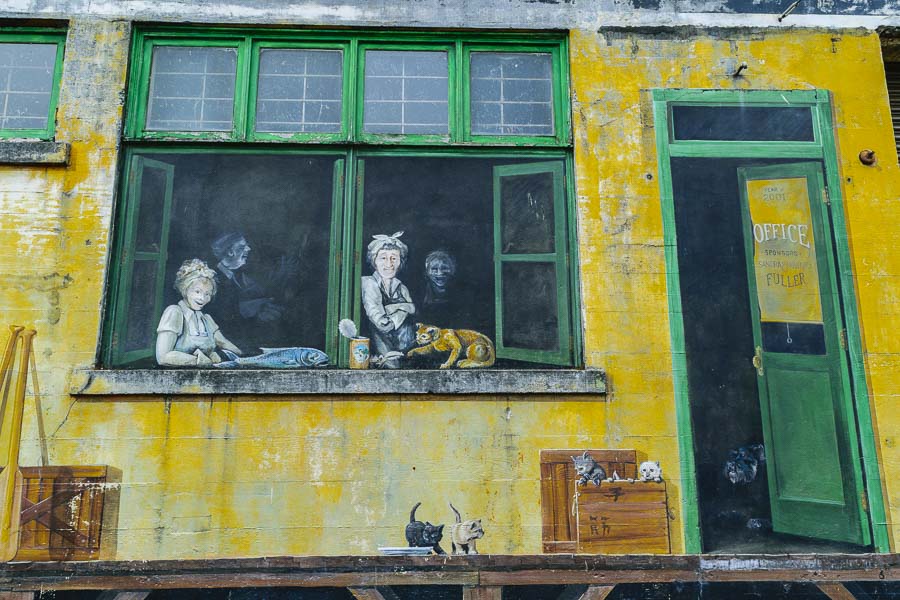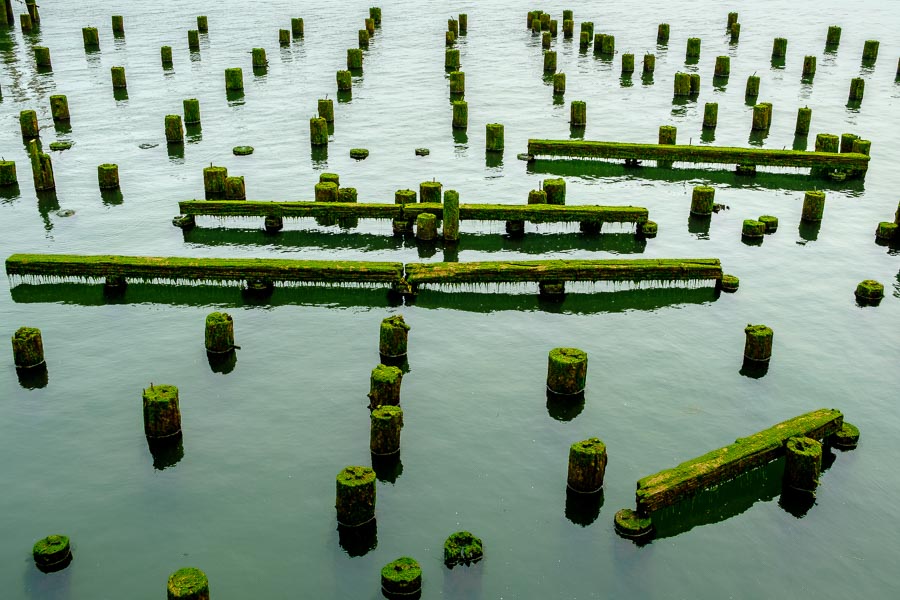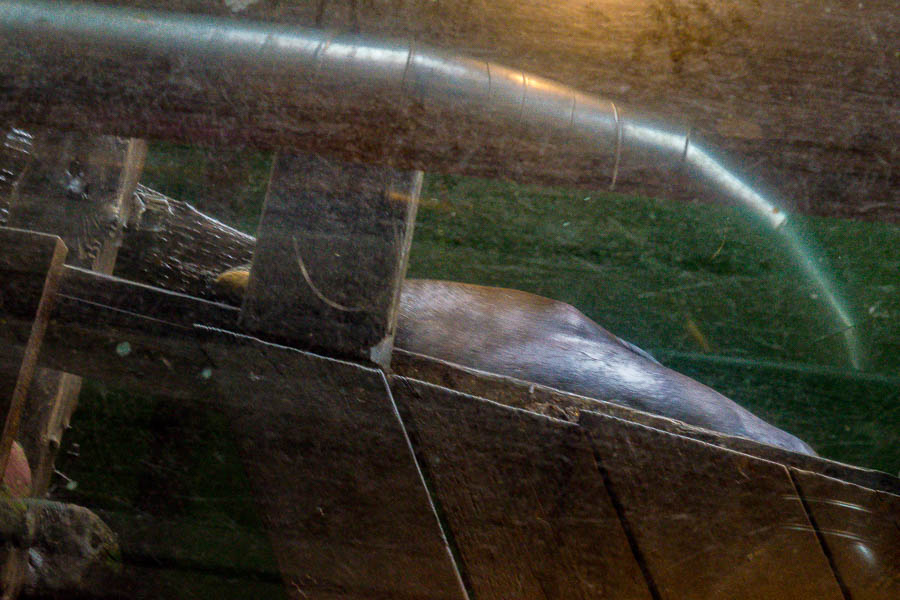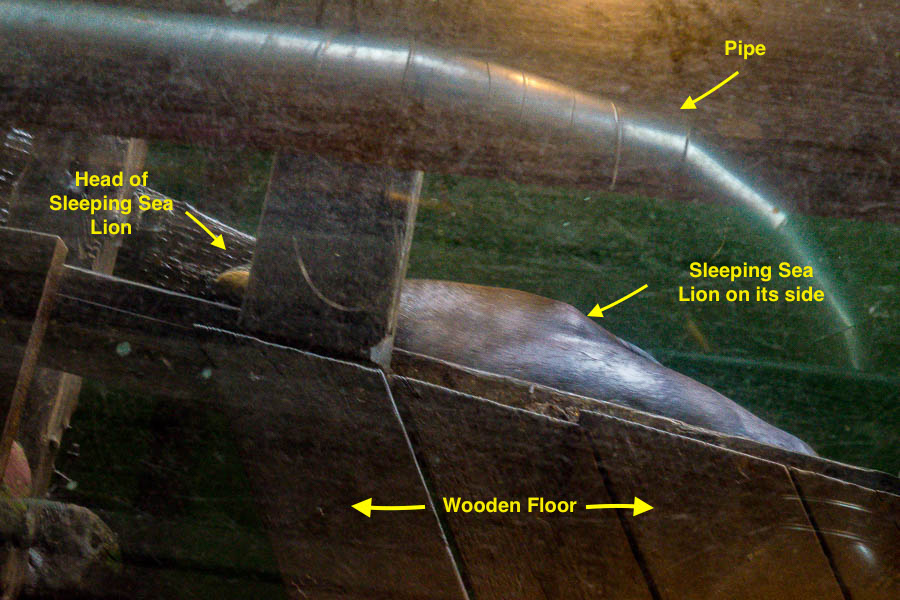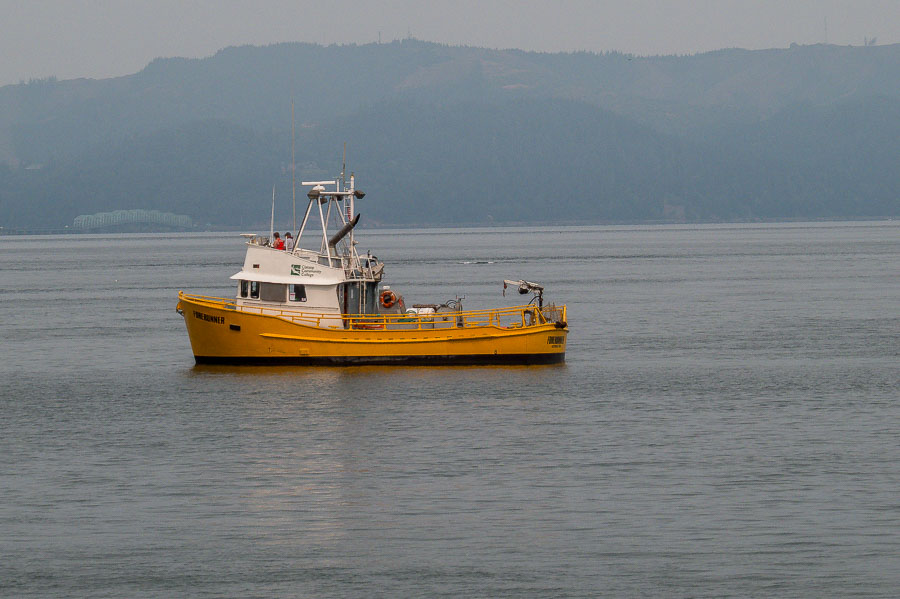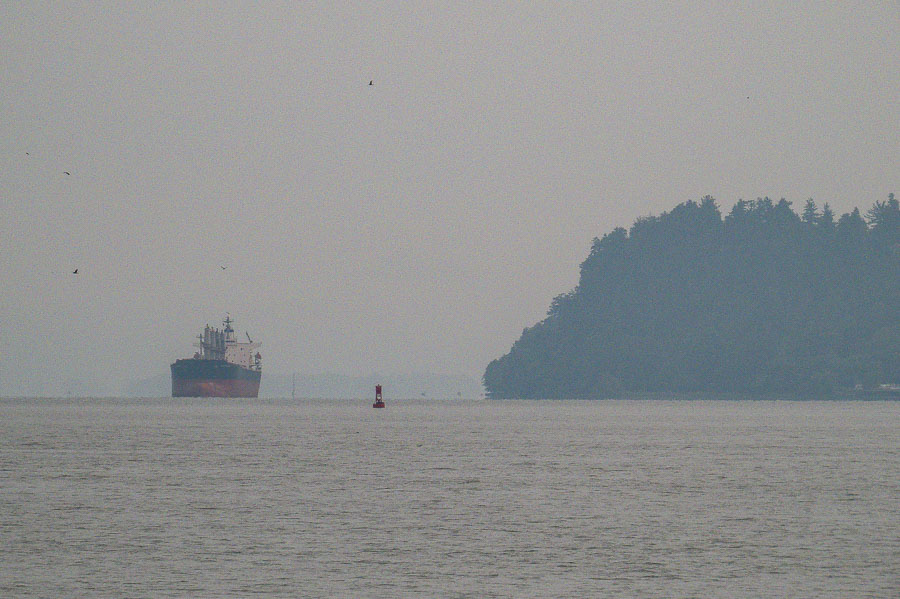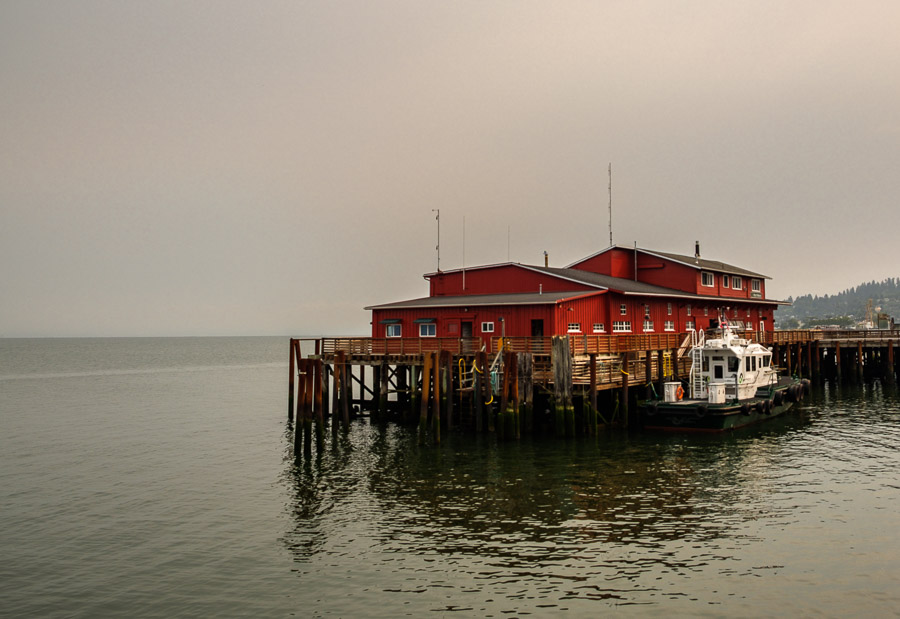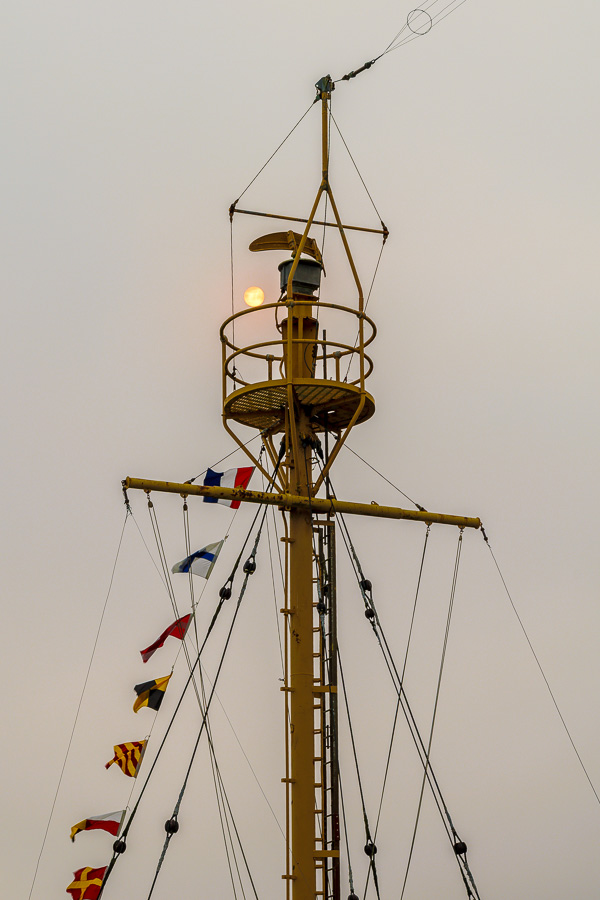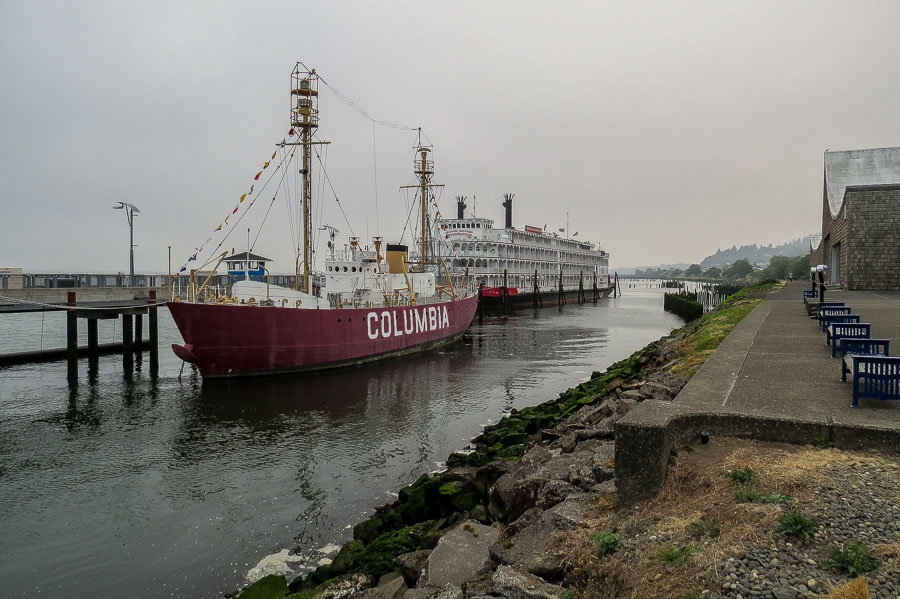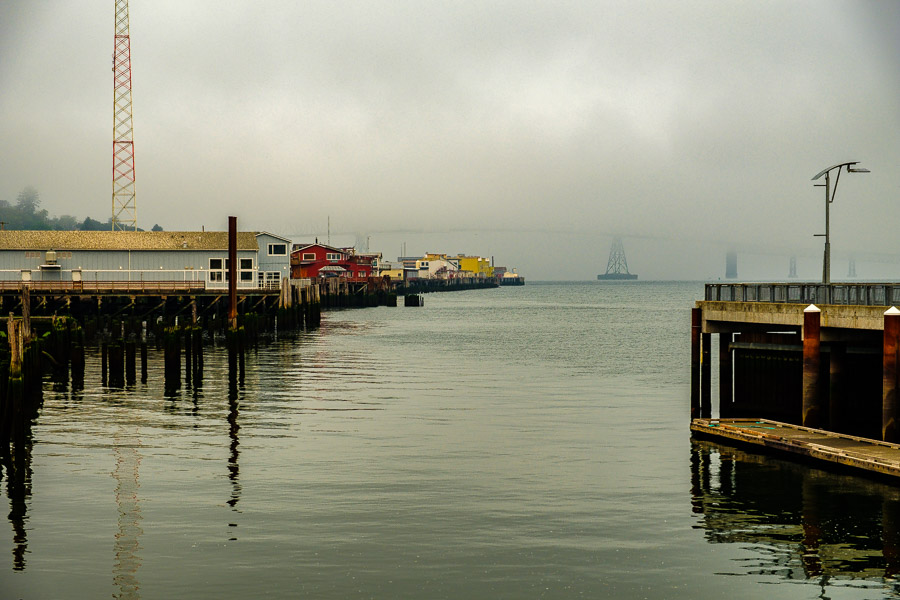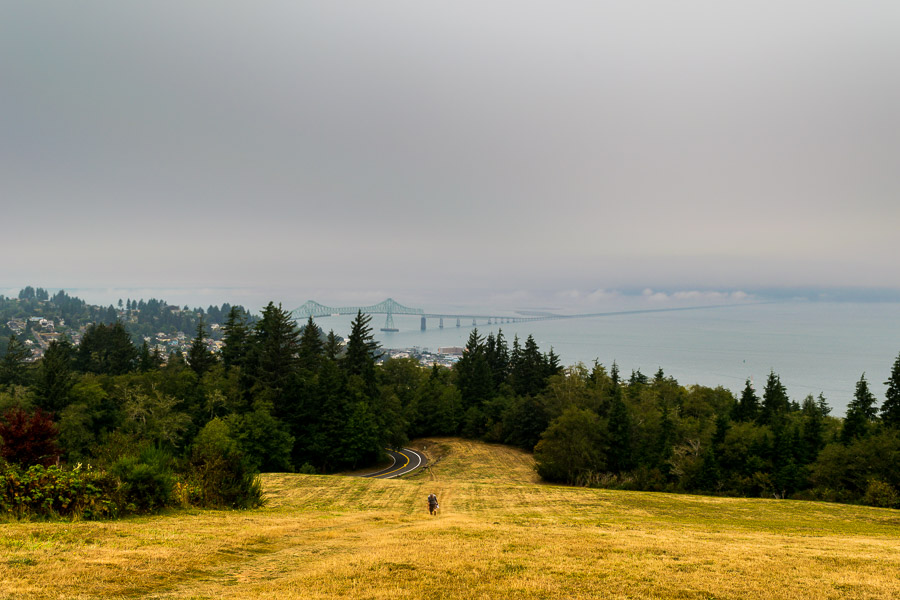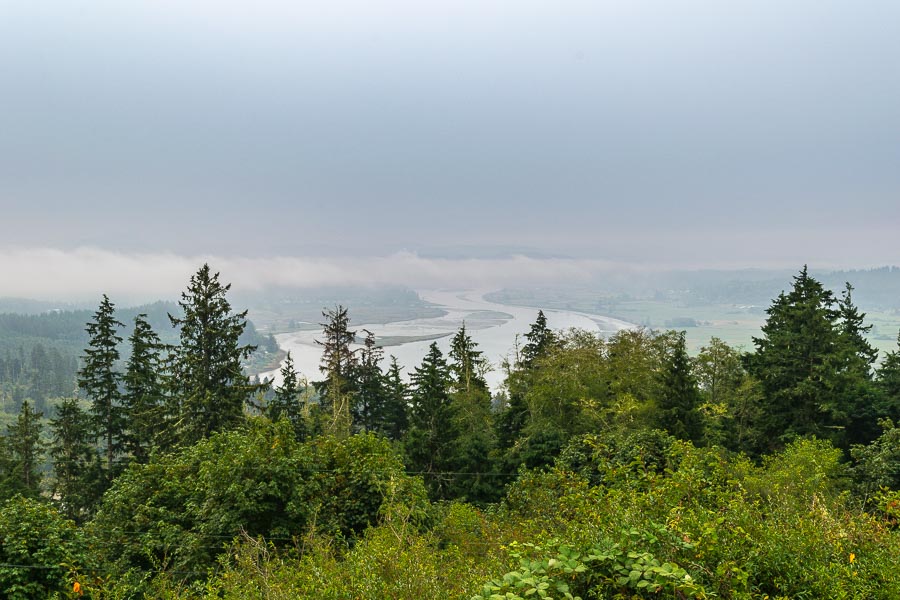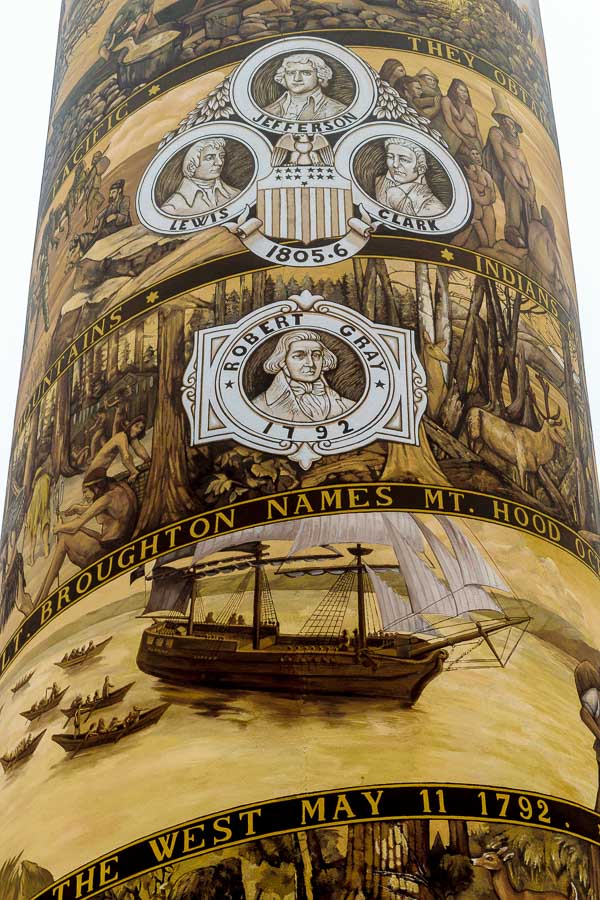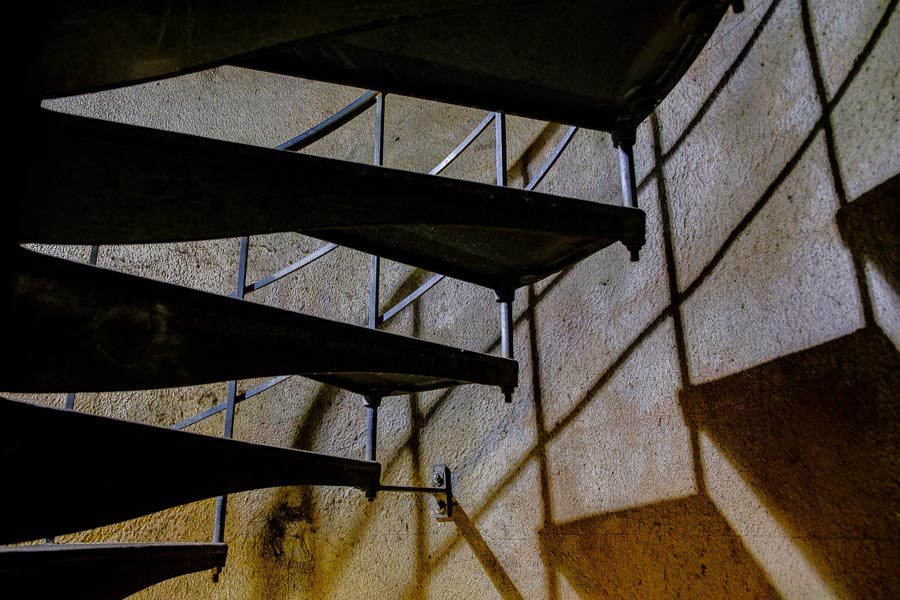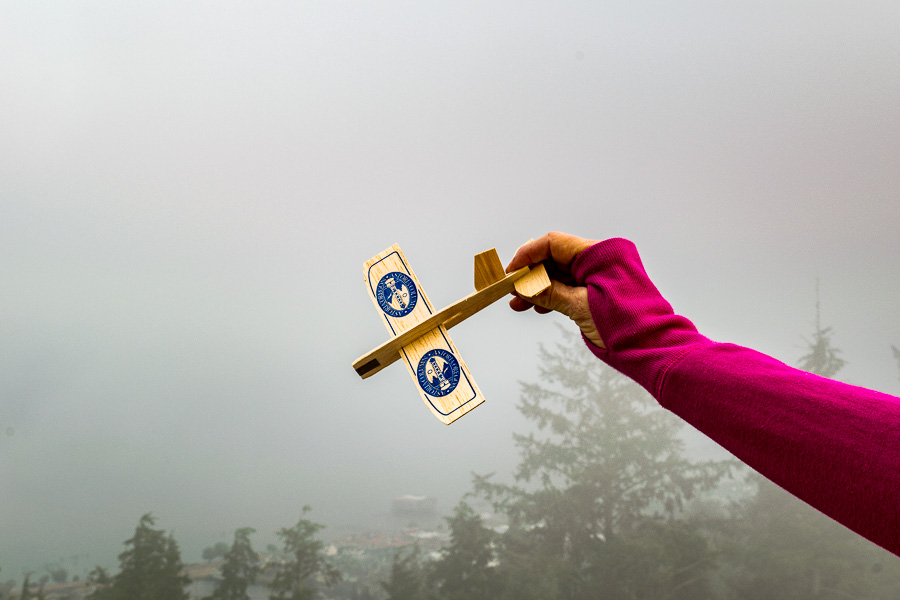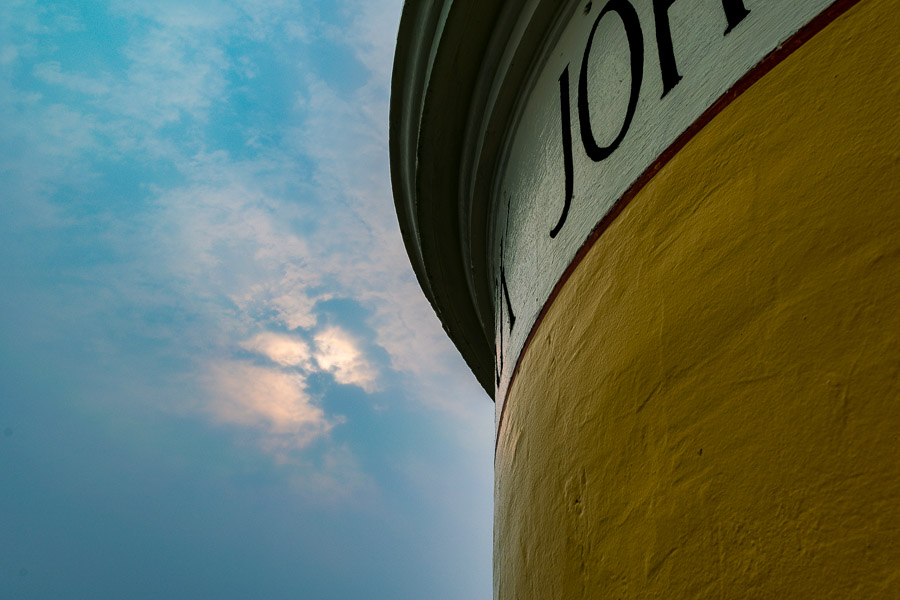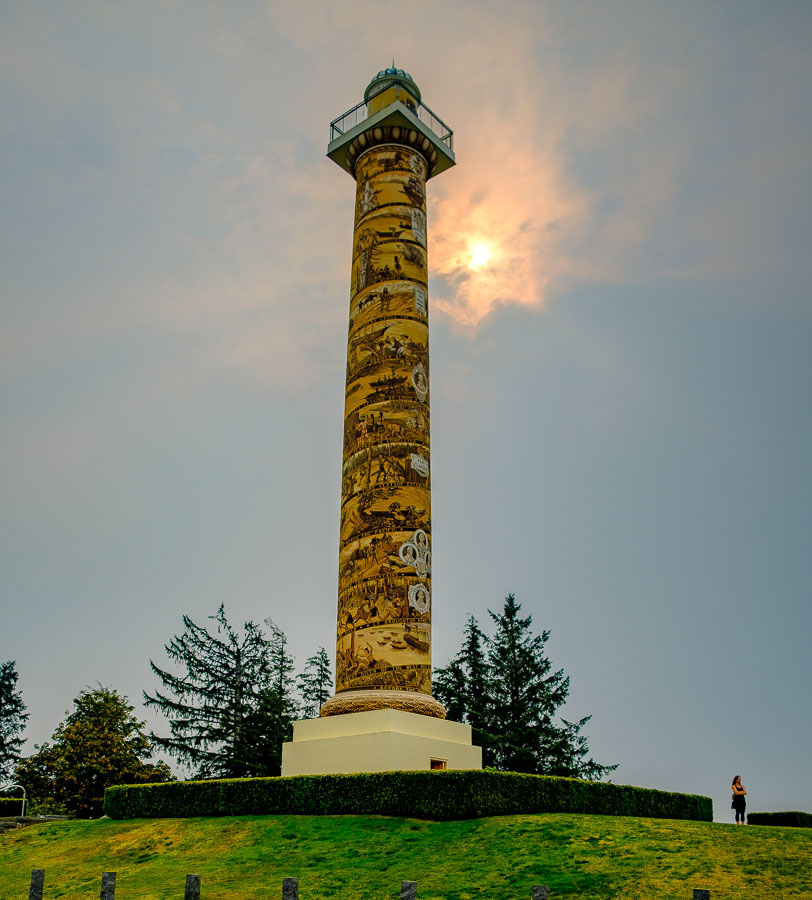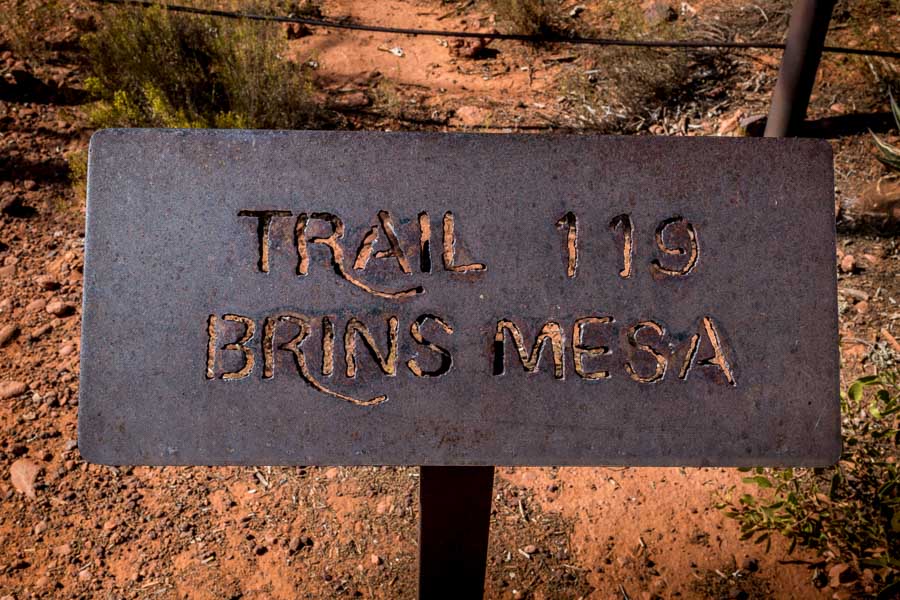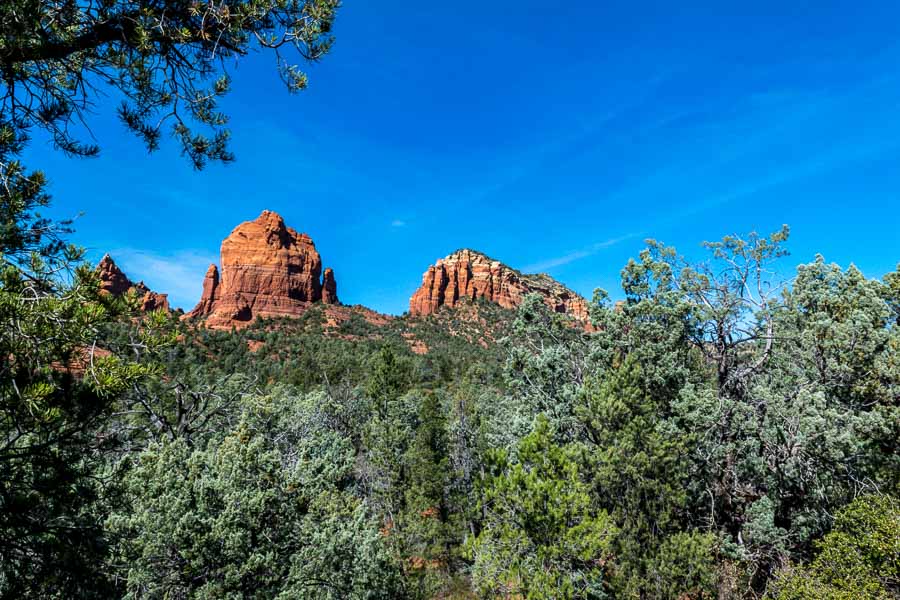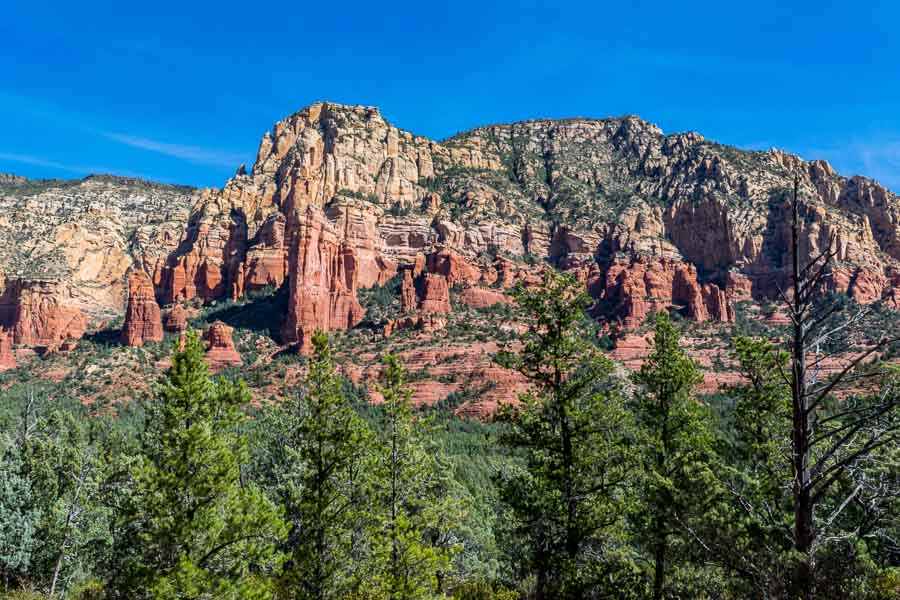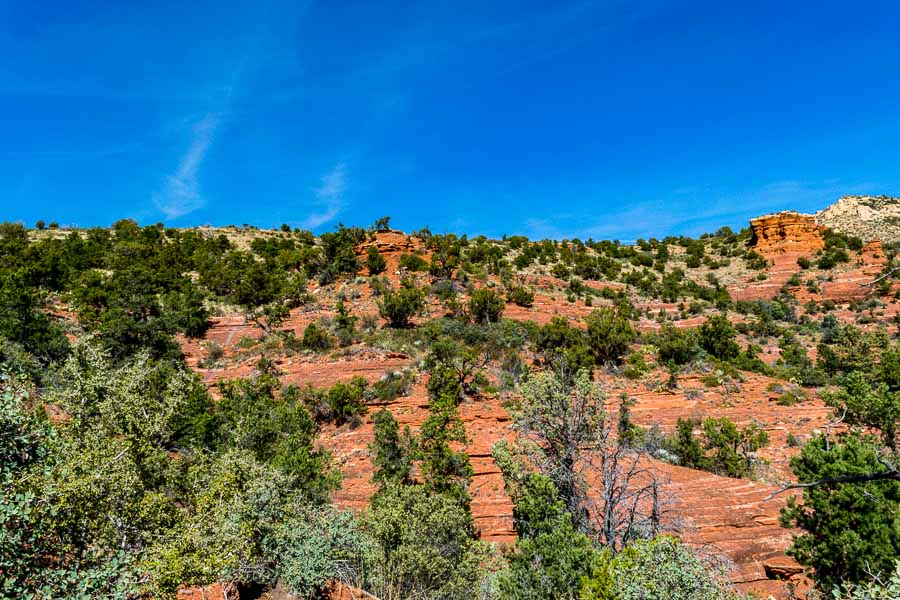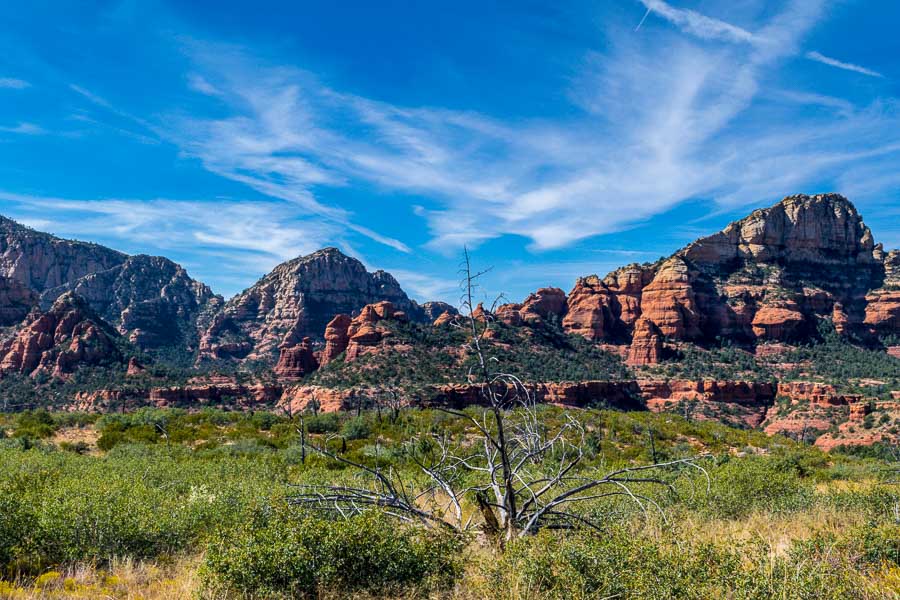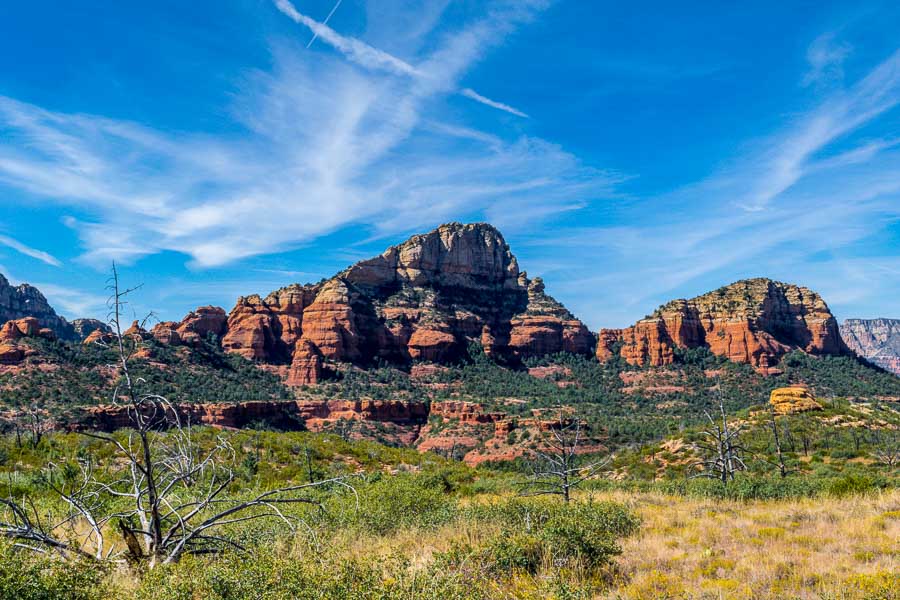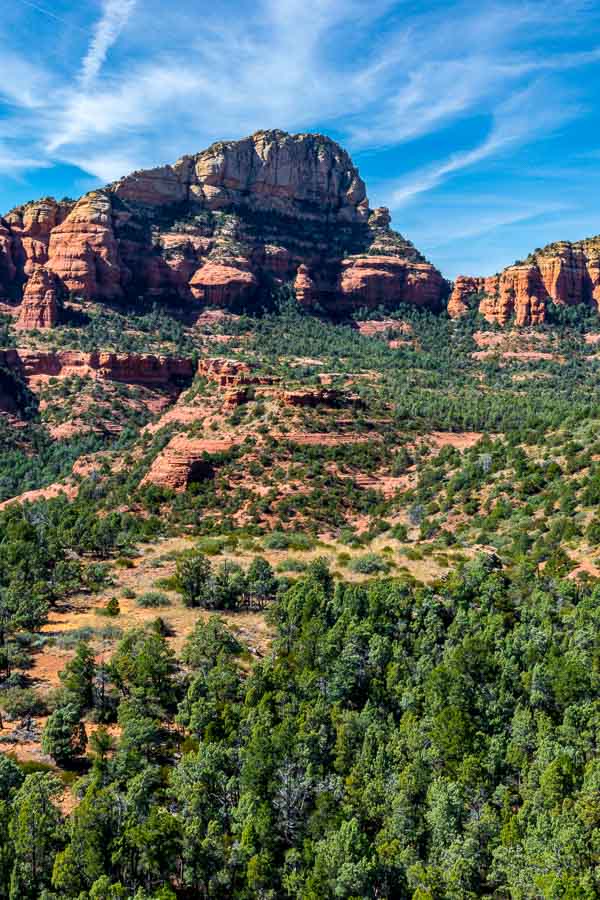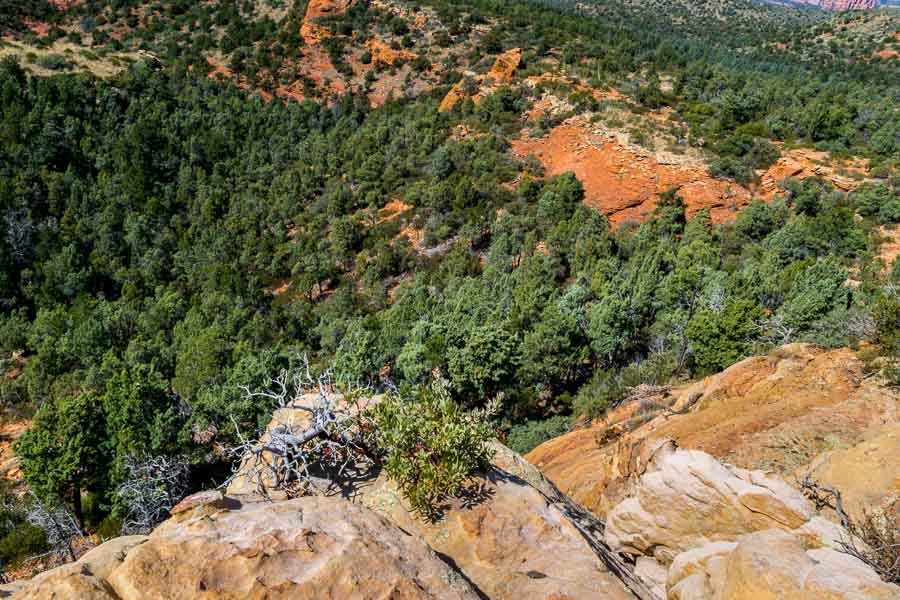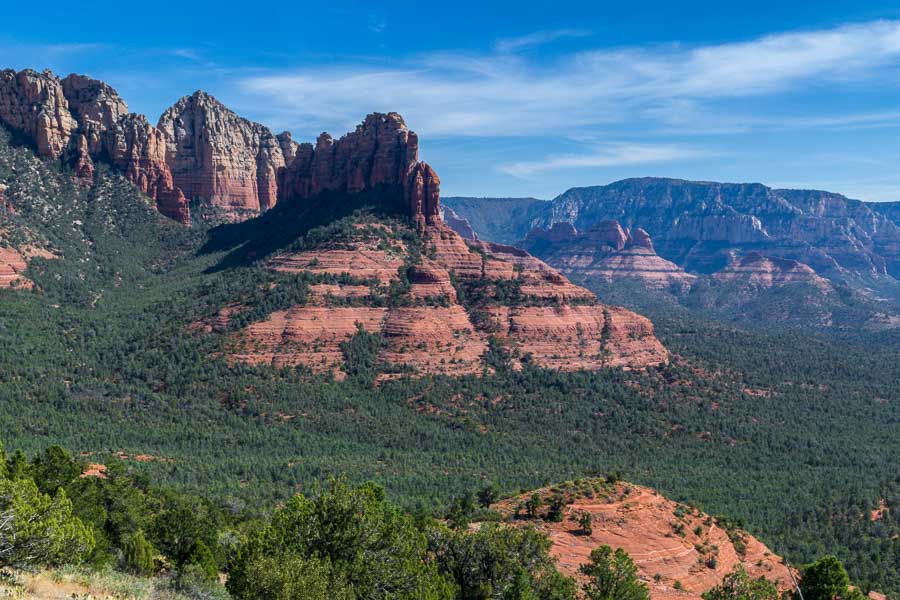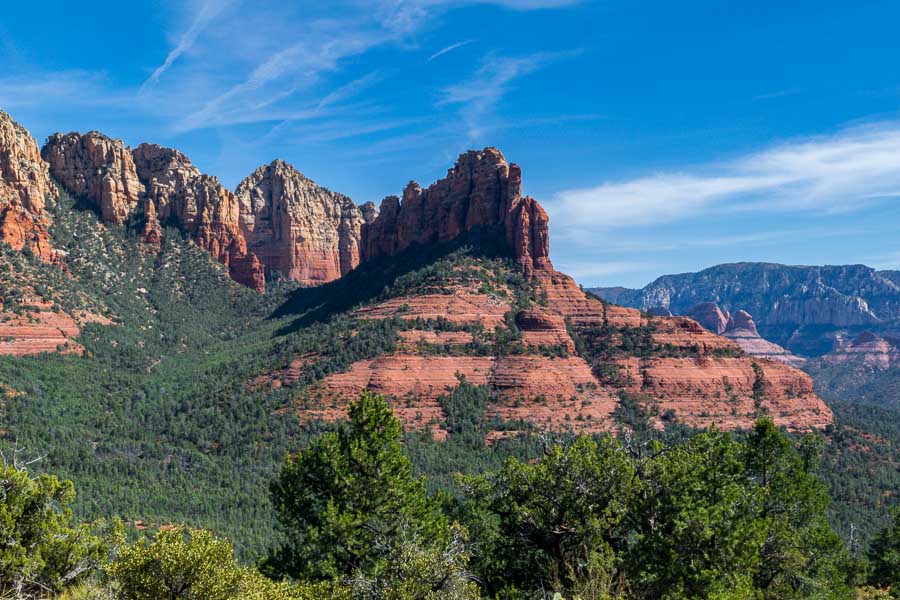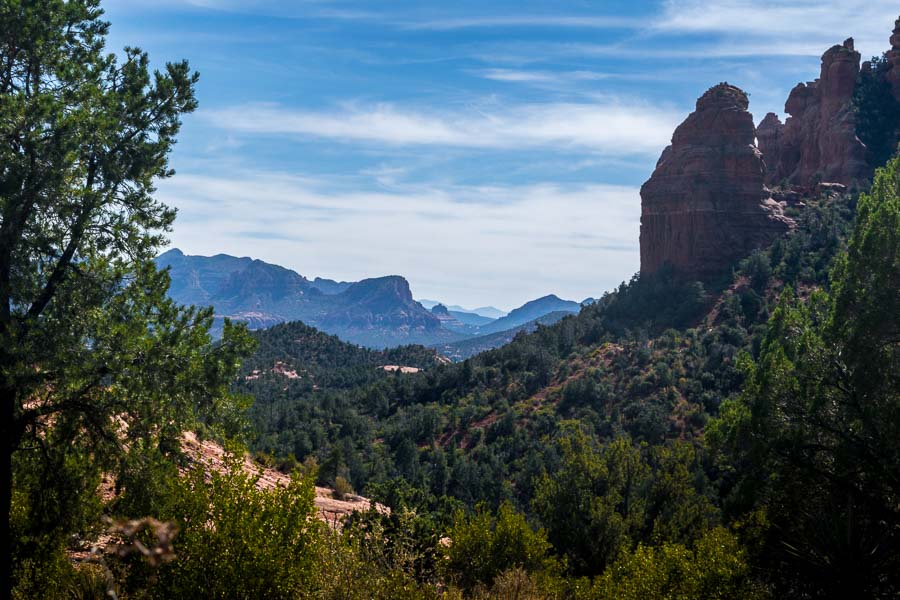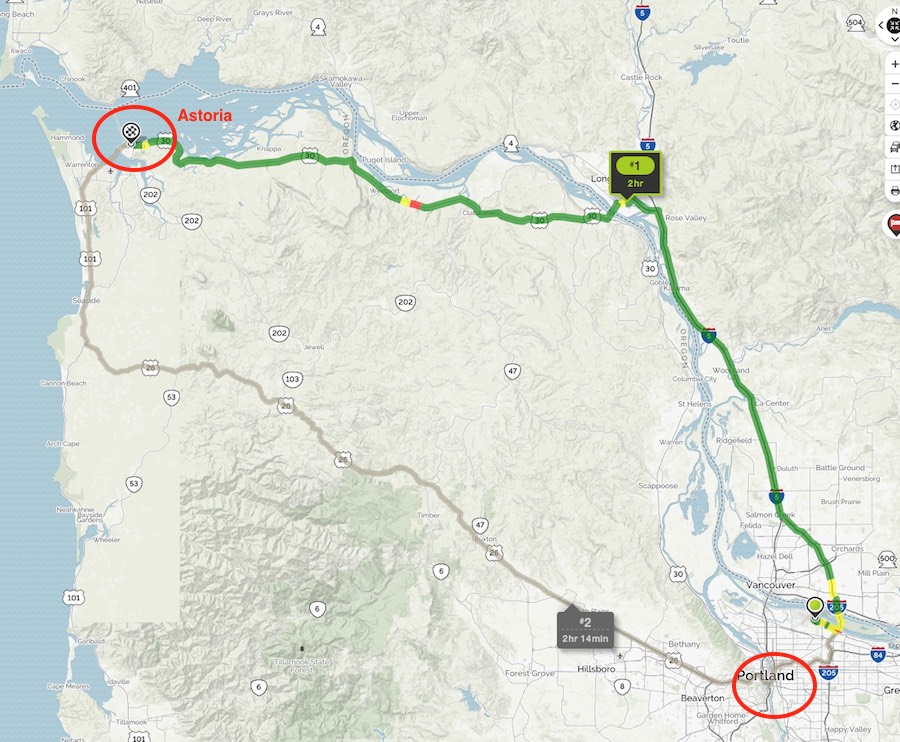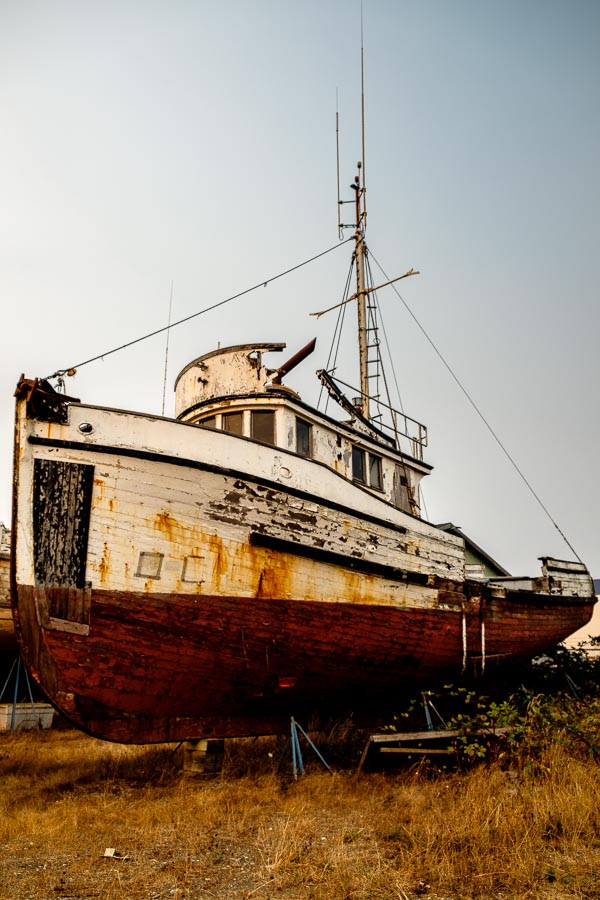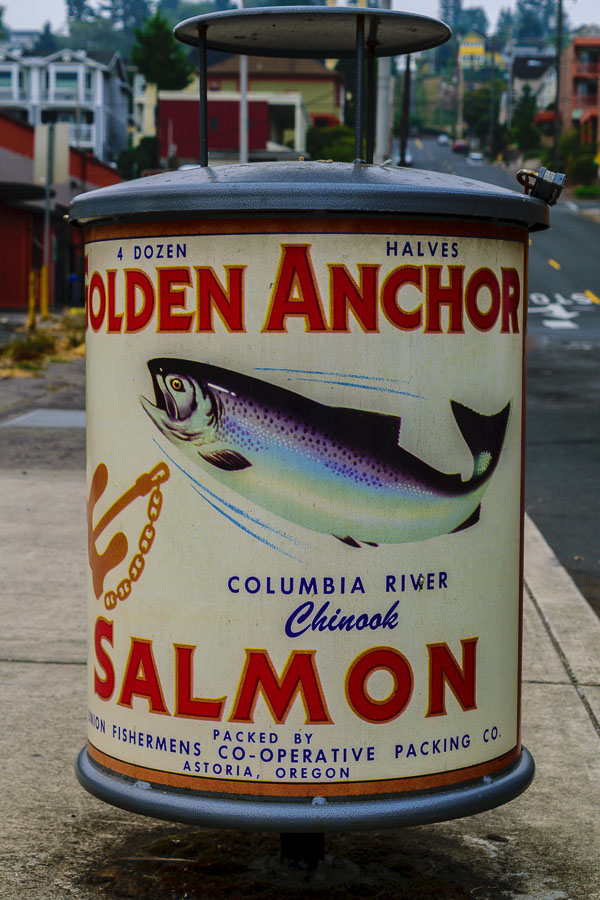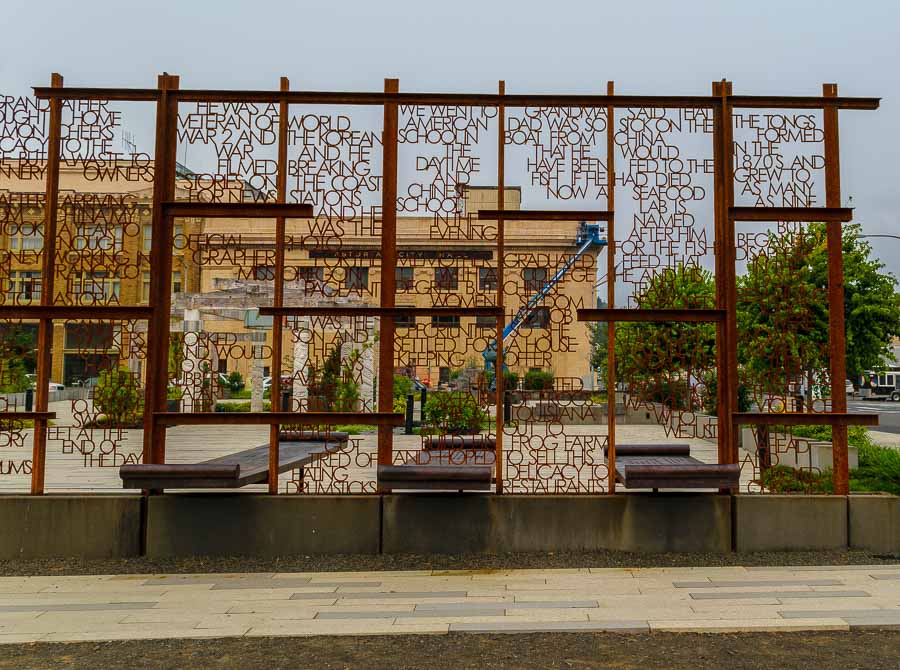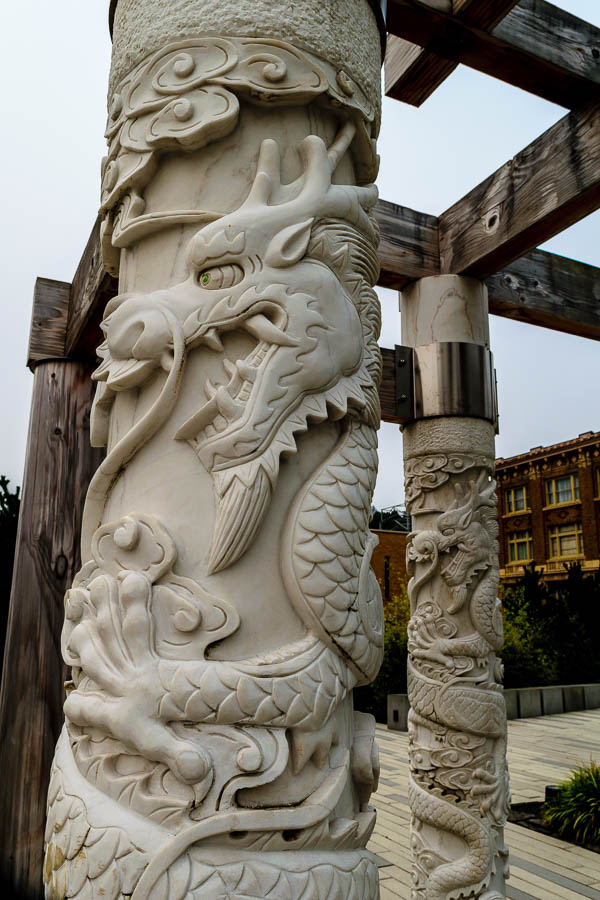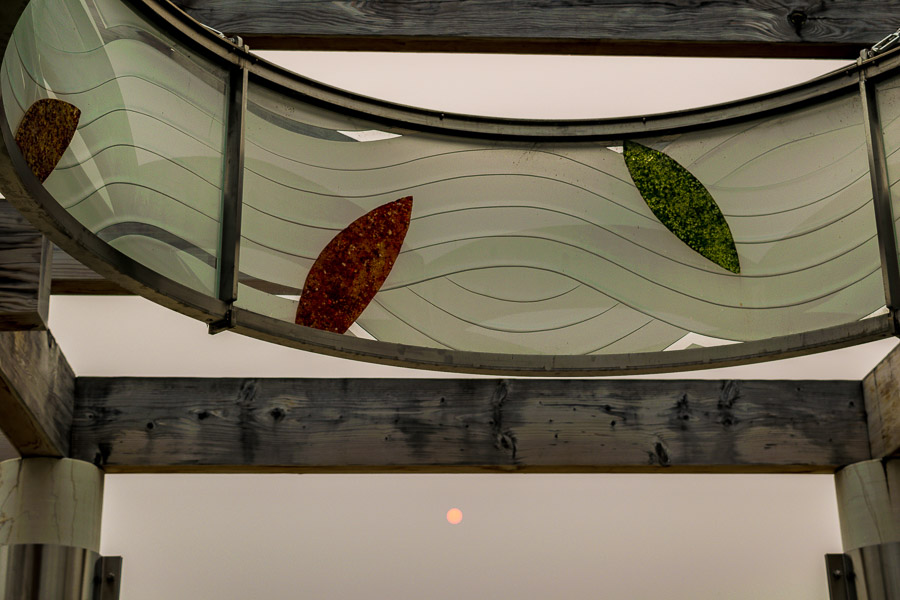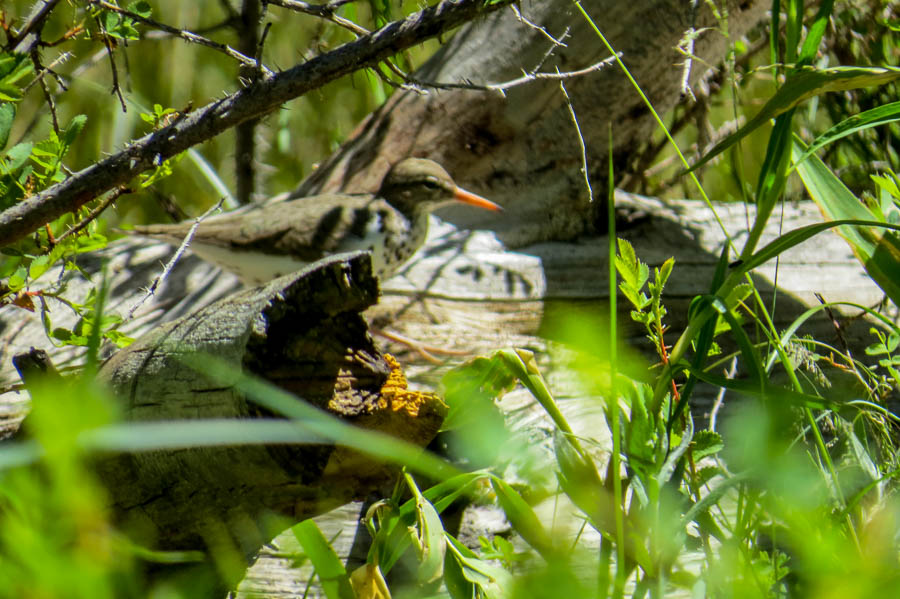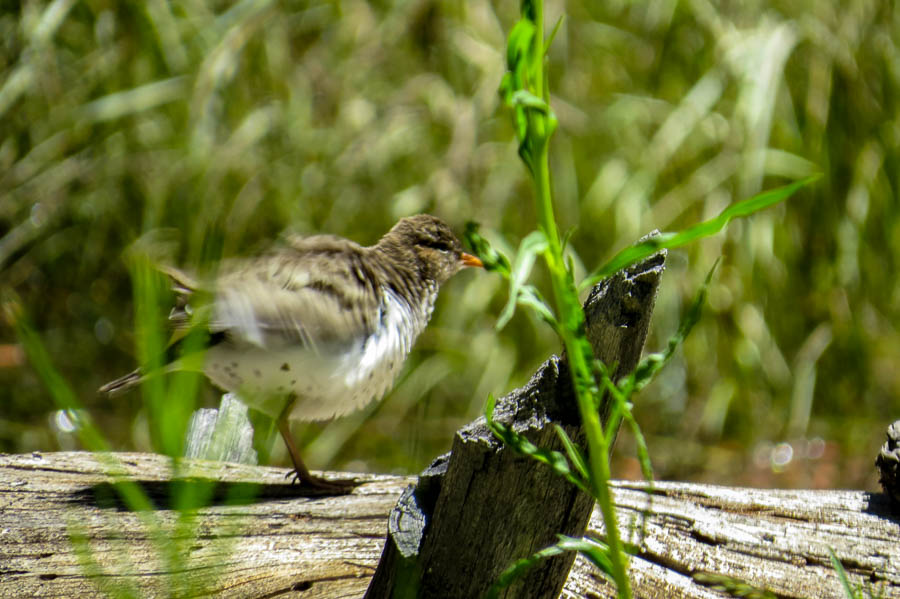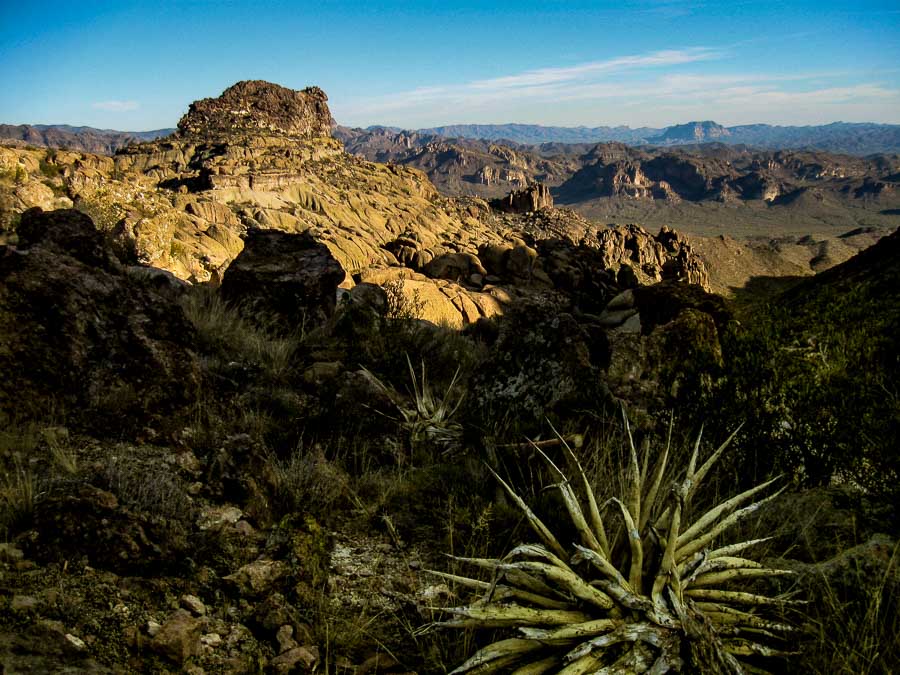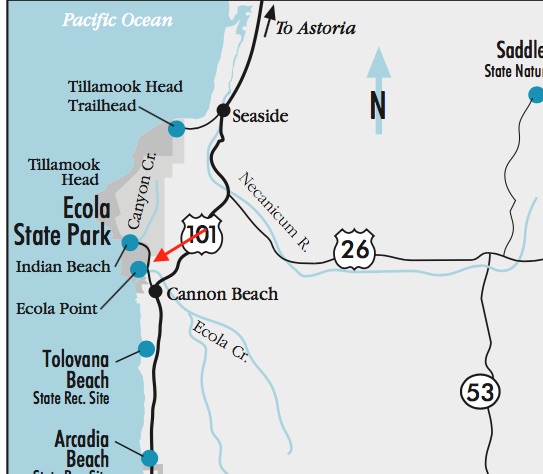
Map of Indian Beach and Ecoloa Point
While we were exploring Indian Beach at Ecola State Park, we noticed a sign pointing to additional viewpoints. The weather continued to be dreary. A few years ago, we hiked a week in the rain in the Grand Tetons so we weren’t going to shy away from exploring on this day either.
I can’t tell you the exact road, but it led us to a point further south of Indian Beach and there were quite a few other cars in the parking area. The overlook brought us to a place where we could see Cannon Beach and the famed Haystack Rock with the summer’s growth fading in the foreground.
NOTE – Apparently this is near Ecola Point and Crescent Beach (see map above). If all else fails, look for those landmaarks.

Cannon beach seen through the grassland
The sky would lighten and darken at times adding even more dramatic views.

The sky turned stormy at times
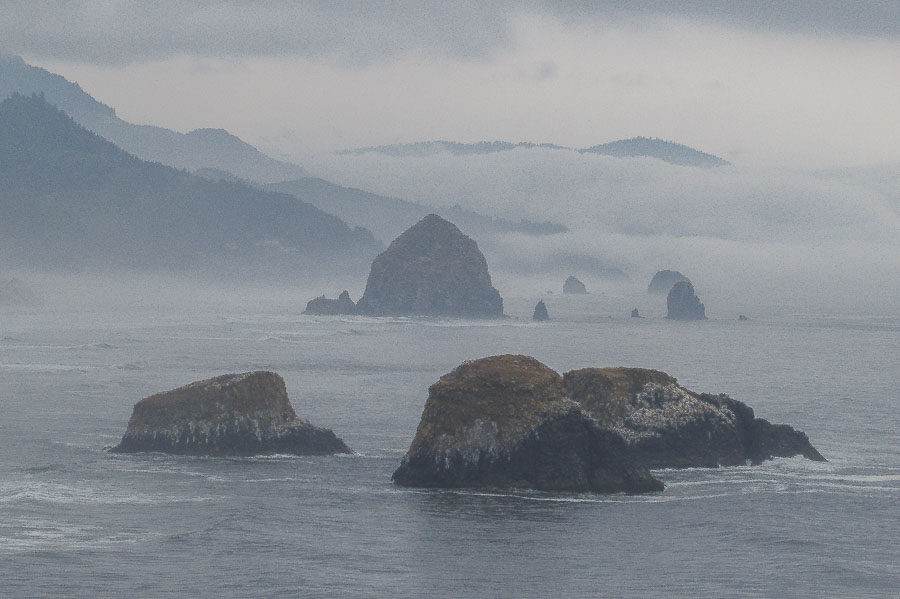
A closer view of the massive ocean rocks
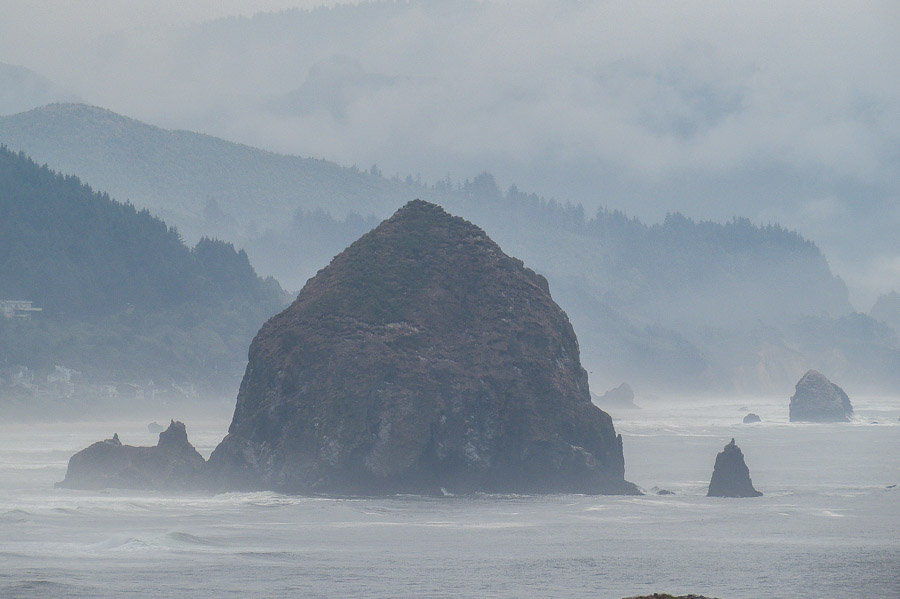
Haystack Rock is the iconic feature of Cannon Beach
This was not the only scene available at this stop. Sea Lion Rock could be seen off the coast and even on a grey day, it loomed large in the distance. Apparently native wildlife can often be seen in and around this protrusion, but not during our visit.

Sea Lion Rock awaits around the bend
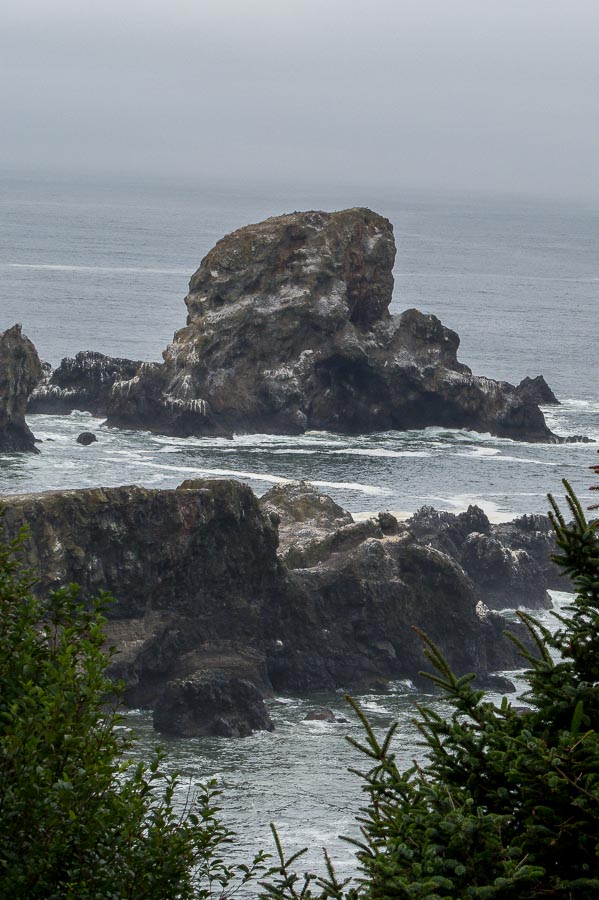
Craggy beauty surrounds the cove
Surprisingly, we caught a glimpse of the Tillamook Rock Light in the distance.
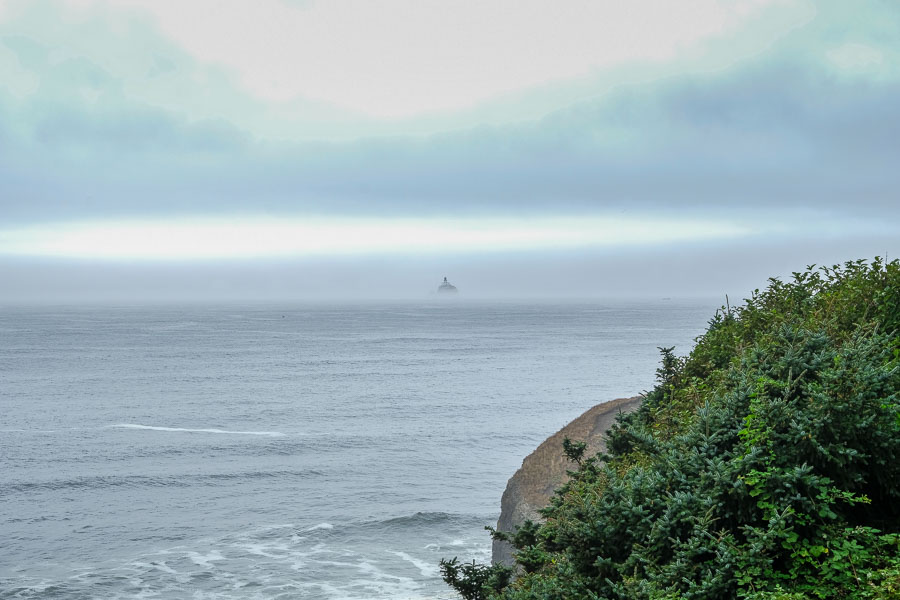
Tillamook Rock Light way in the distance
We tried to find this during our hike of the Clatsop Loop Trail with no success, but then the fog had lifted a bit and there it was in the distance.

Tillamook Rock Light – the best shot I could manage
Although the rain held off and the sky had periods of brightness, we were ready to leave, but I needed to capture one or two more shots of Cannon Beach and Haystack Rock.

Parting shots of Cannon Beach and the Haystack
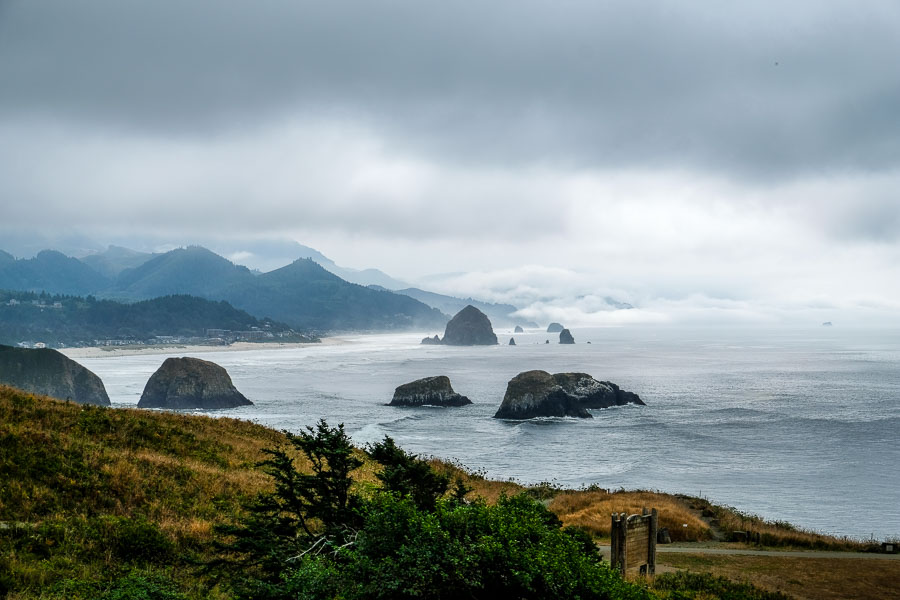
NOTE – I would like to point out that Oregon has a very enlightened approach to their shoreline. Most areas of the coast are open to the public and with the purchase of a yearly parking pass at $30 +/- visitors and residents alike can enter the state parks and enjoy the beauty of the state. We so enjoyed having this pass which gave us entré to all the areas we had earmarked. I highly recommend it.
Oregon State Parks parking permit
You can find more information about this resource HERE.
Read More about Ecola State Parkore
**********
Read previous posts about our adventures hiking and exploring in Oregon:
Exploring Astoria, Oregon – Part 1
Exploring Astoria, Oregon – Part 2
Exploring Astoria, Oregon – Part 3
Adventures in Oregon: Warrenton to Seaside
Adventures in Oregon: Hiking at Indian Beach
Read more Hiking and Exploration posts HERE
**********
All original content on this blog is copyrighted by Jeffrey B. Ross with ALL Rights Reserved. While reference links back to JBRish.com are appreciated and encouraged, please acquire approval for any reproduction of original content from this website.
©Jeffrey B. Ross – 2017 – JBRish.com
Aggregating anemones, Anthopleura elegantissima, Oregon Coast, Lane County, Strawberry Hill State Park
